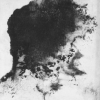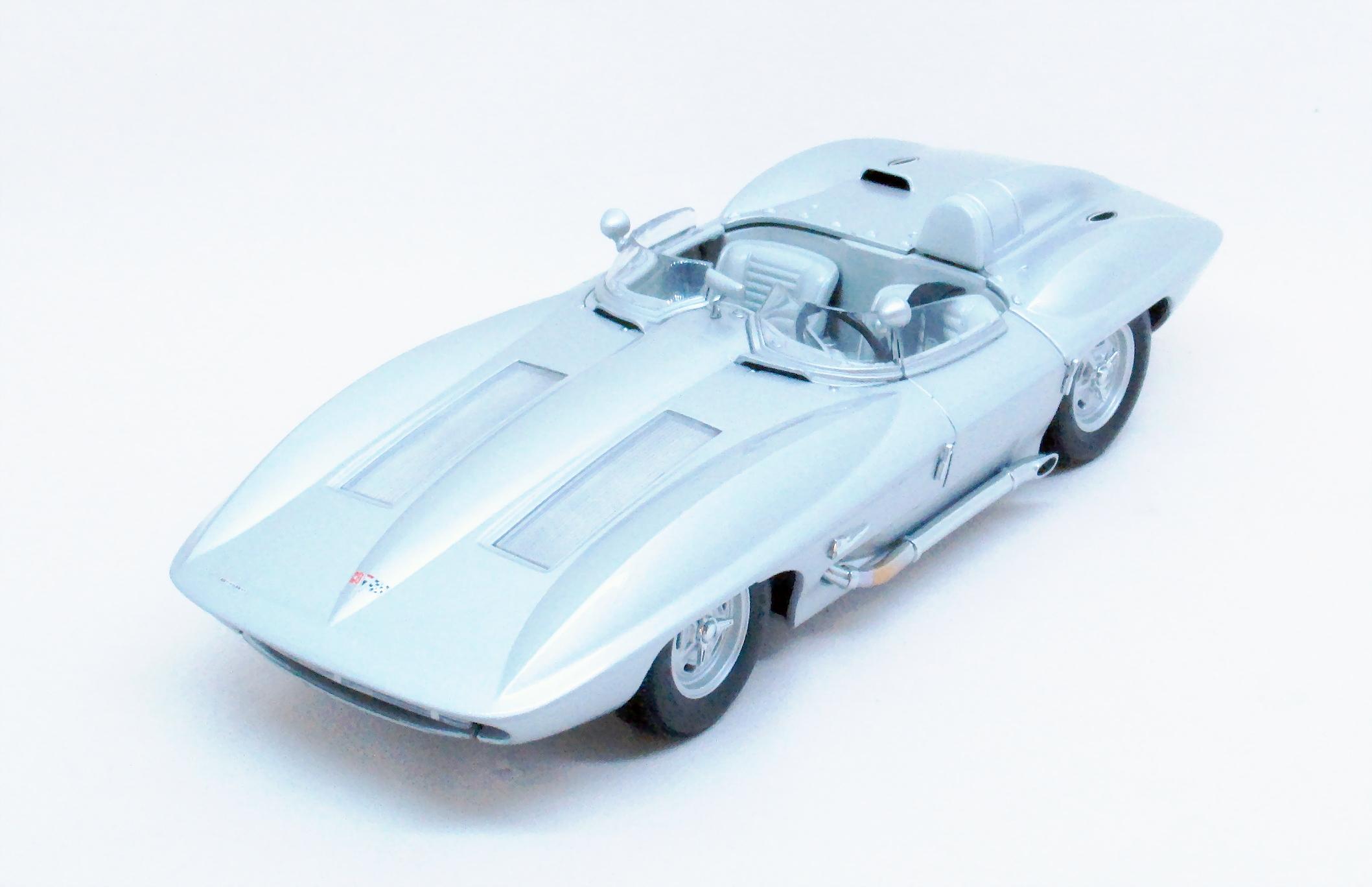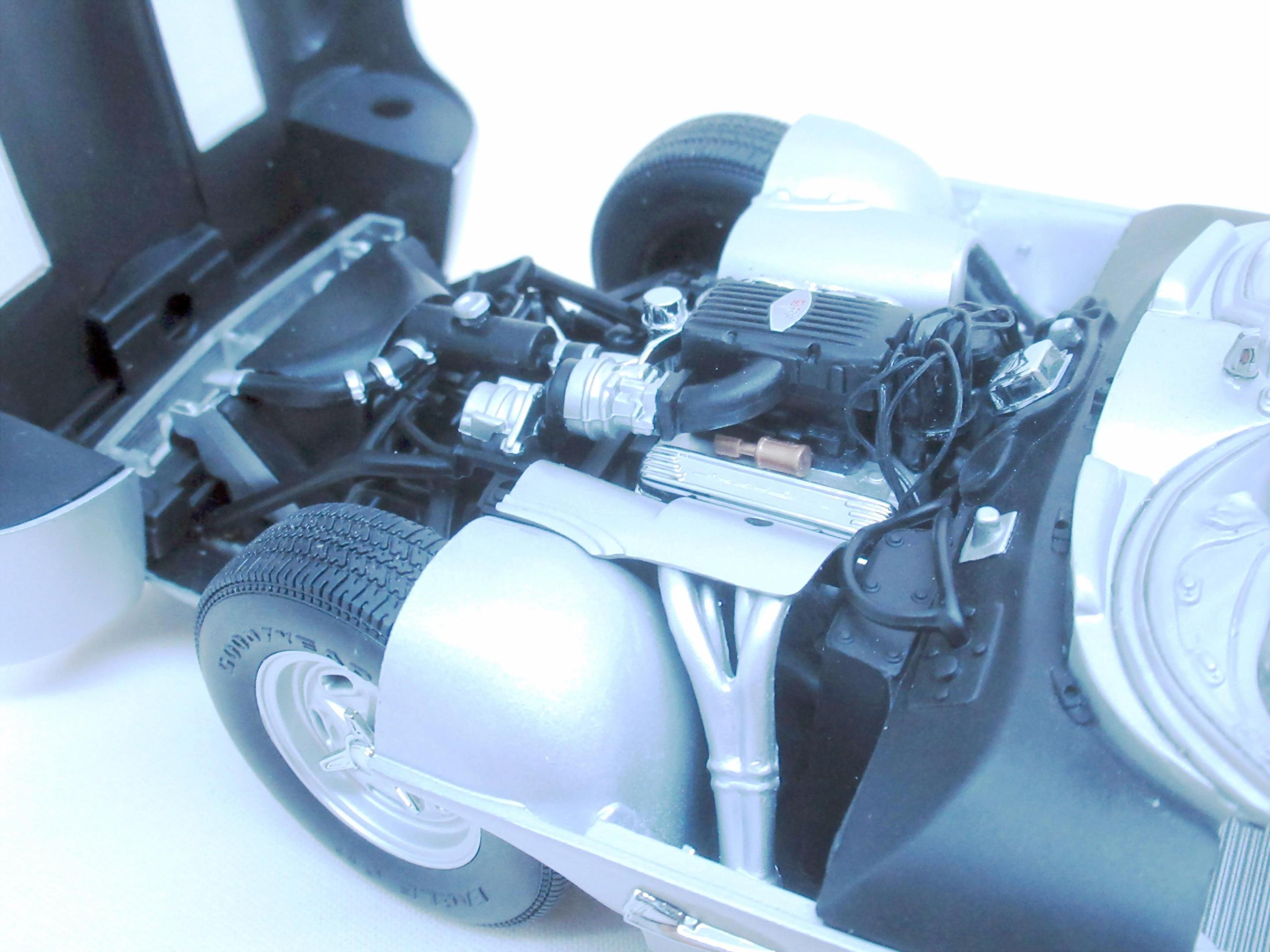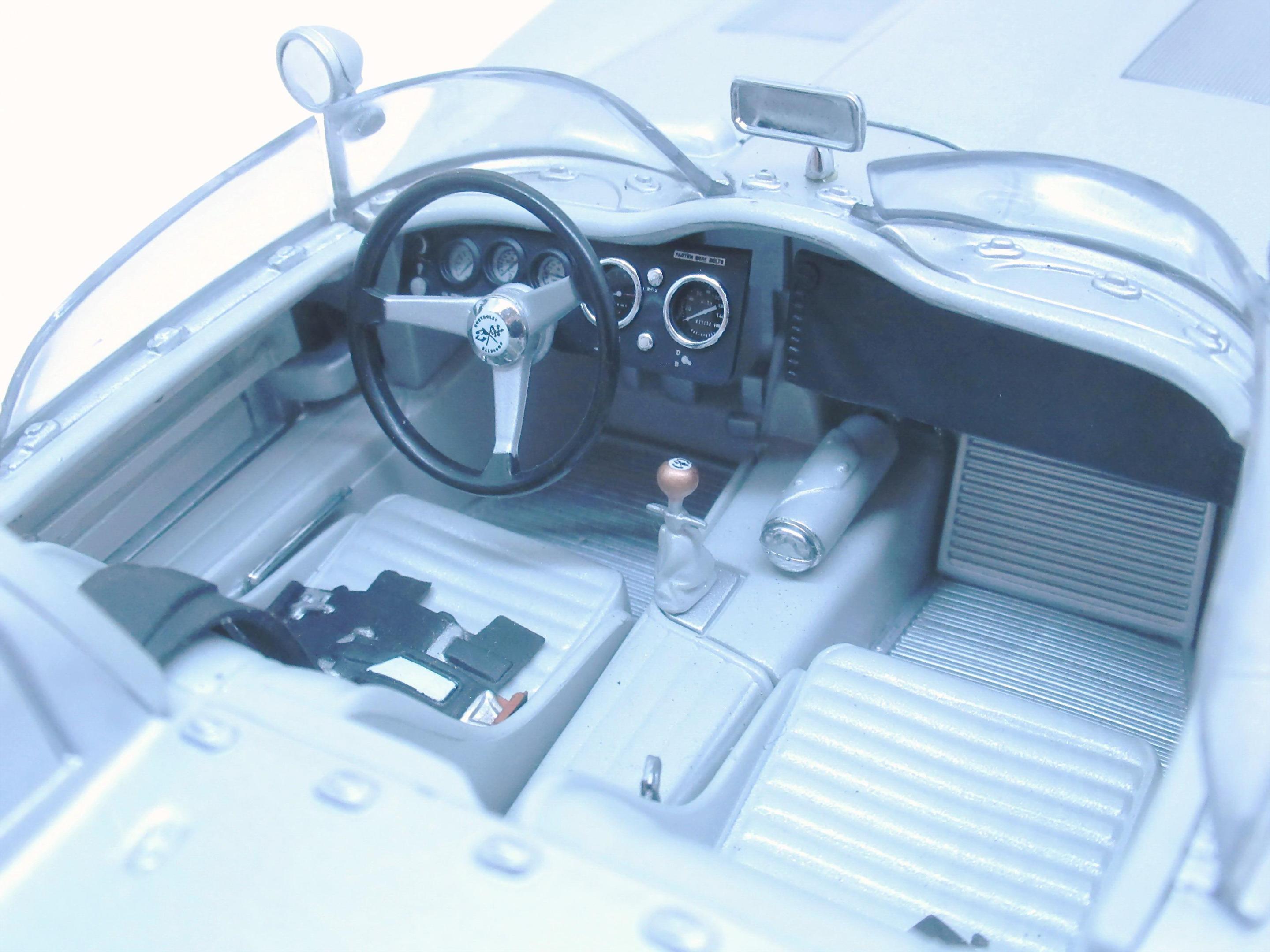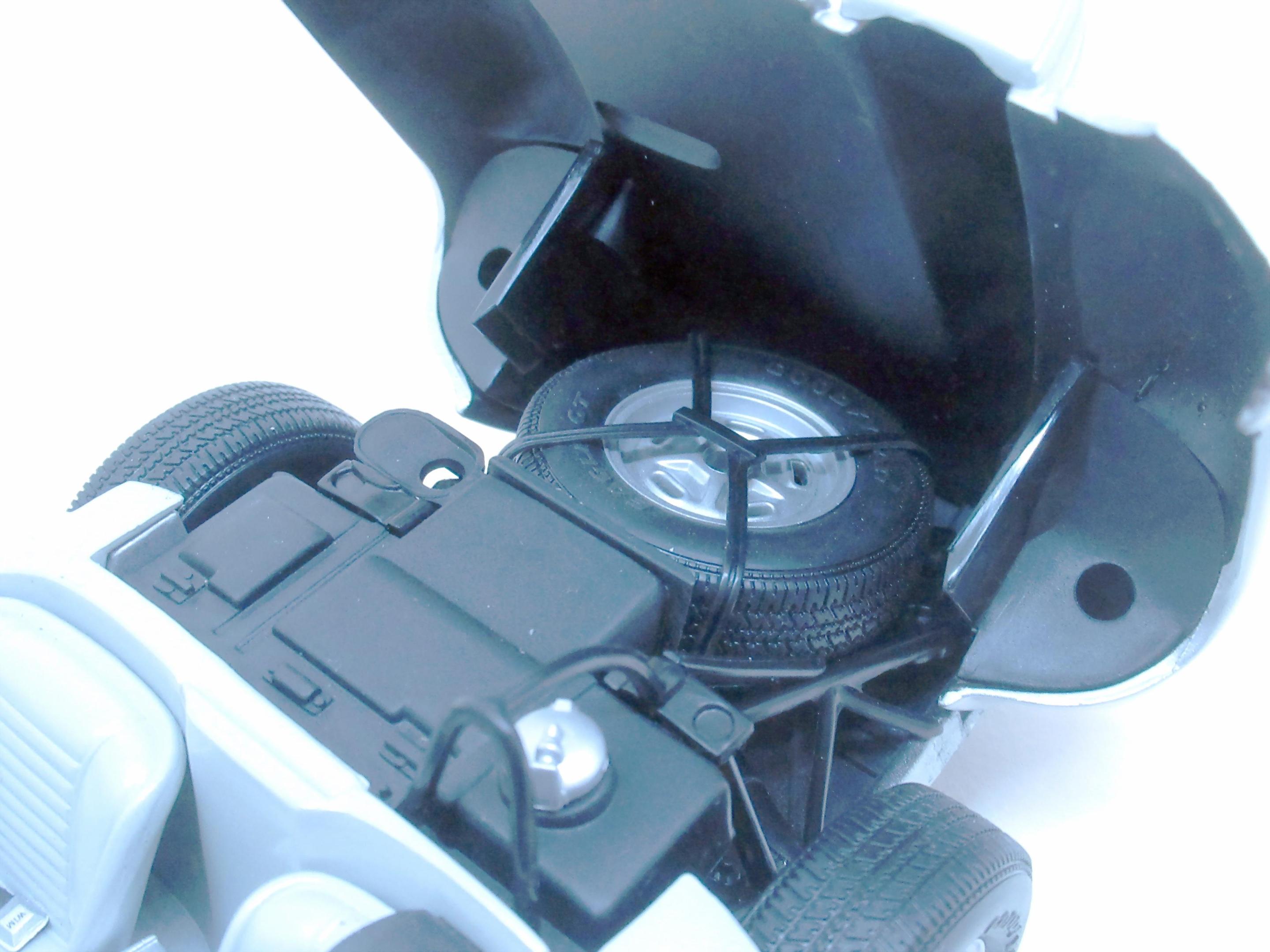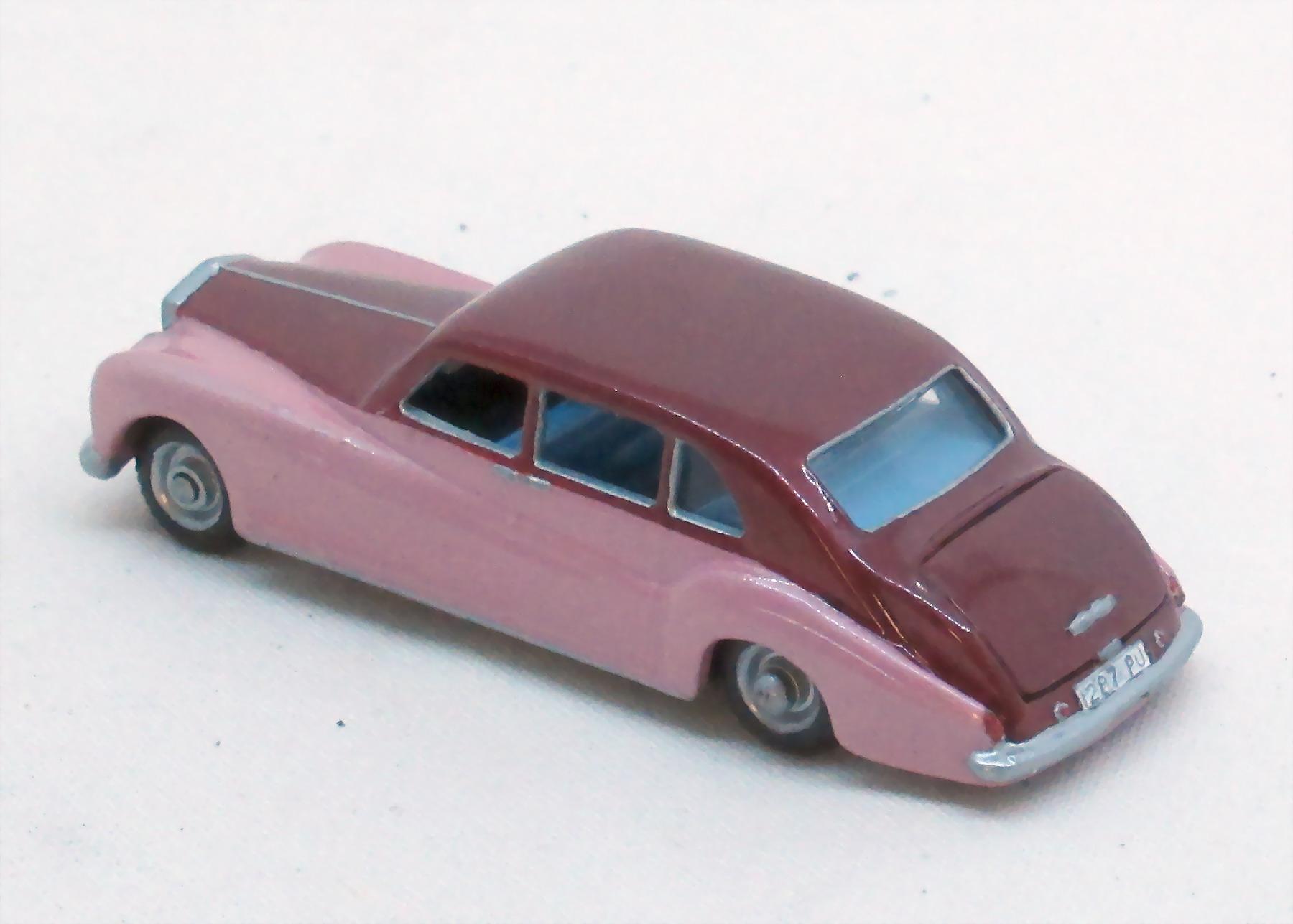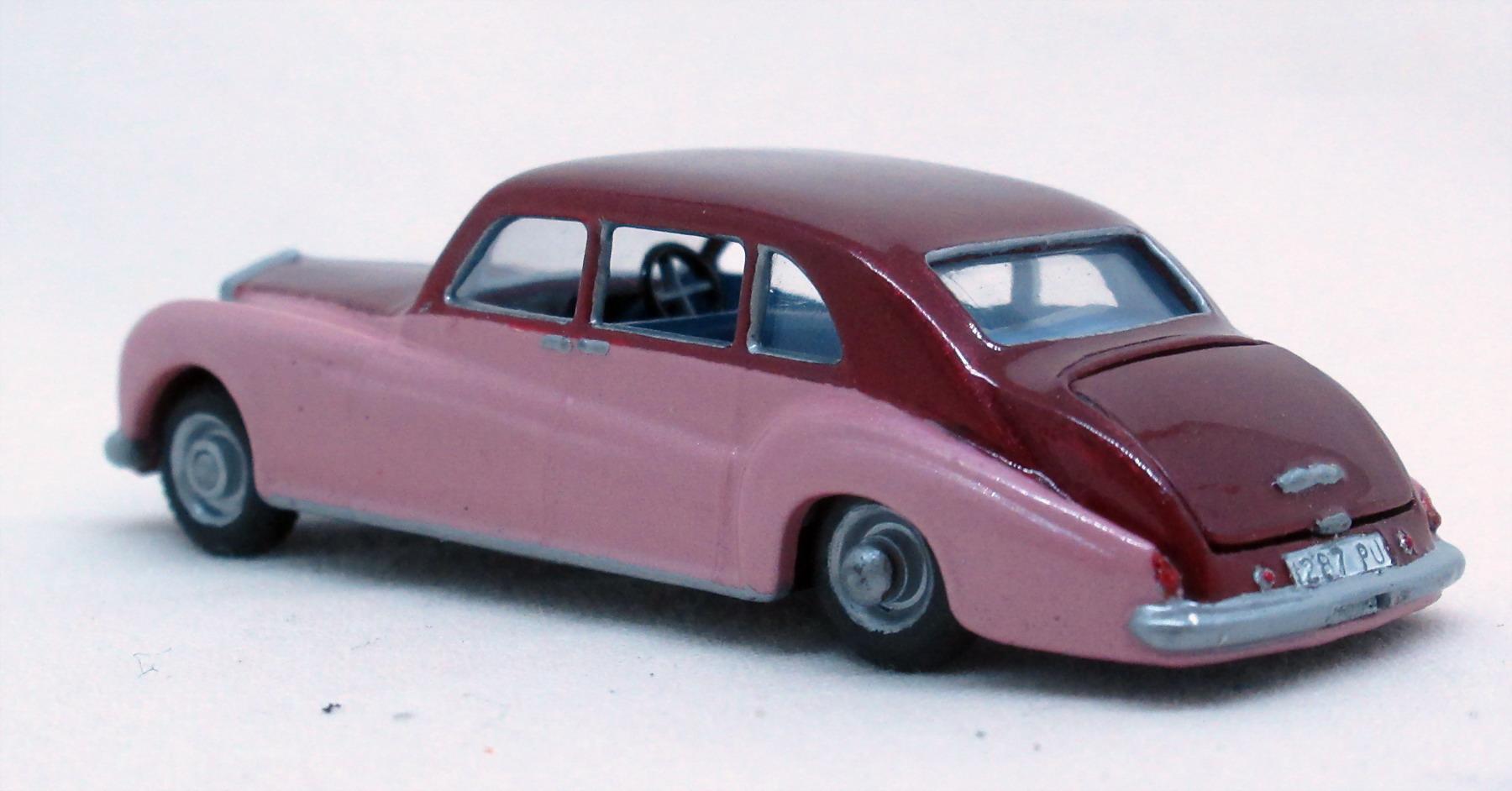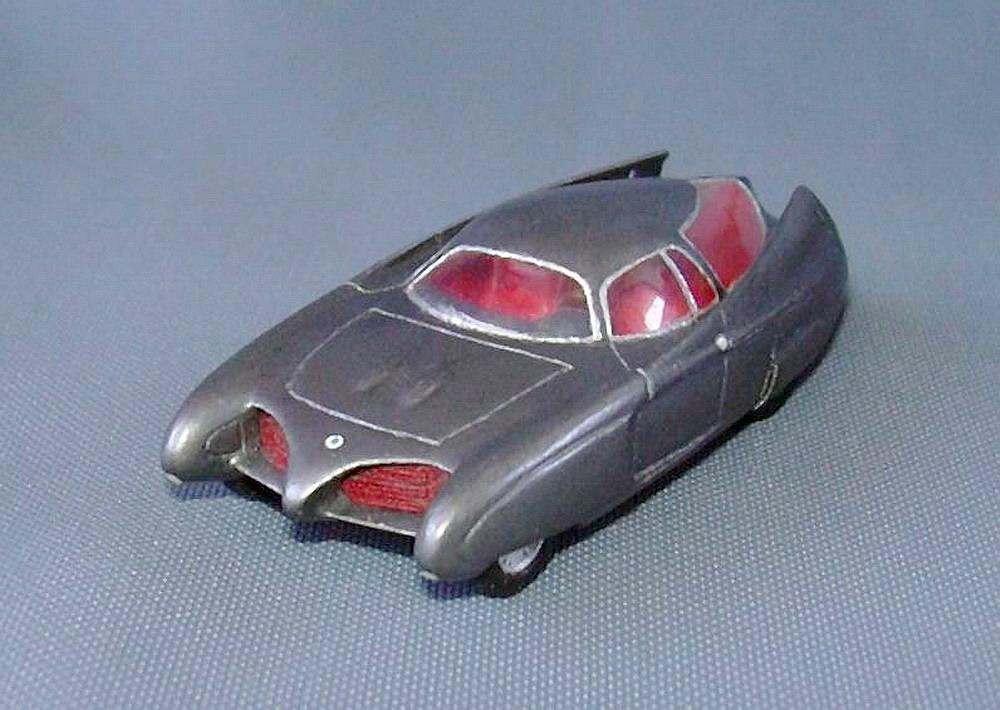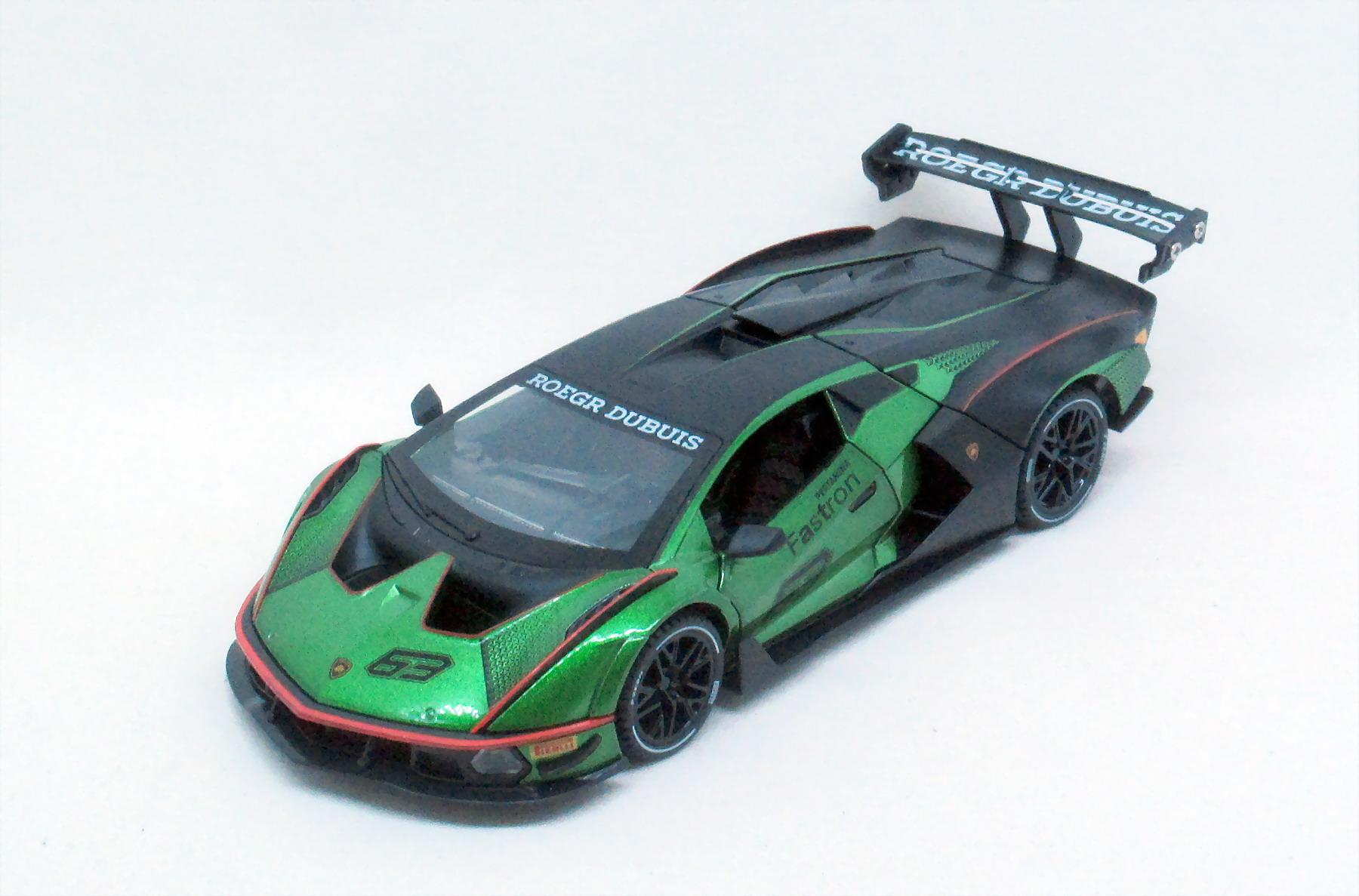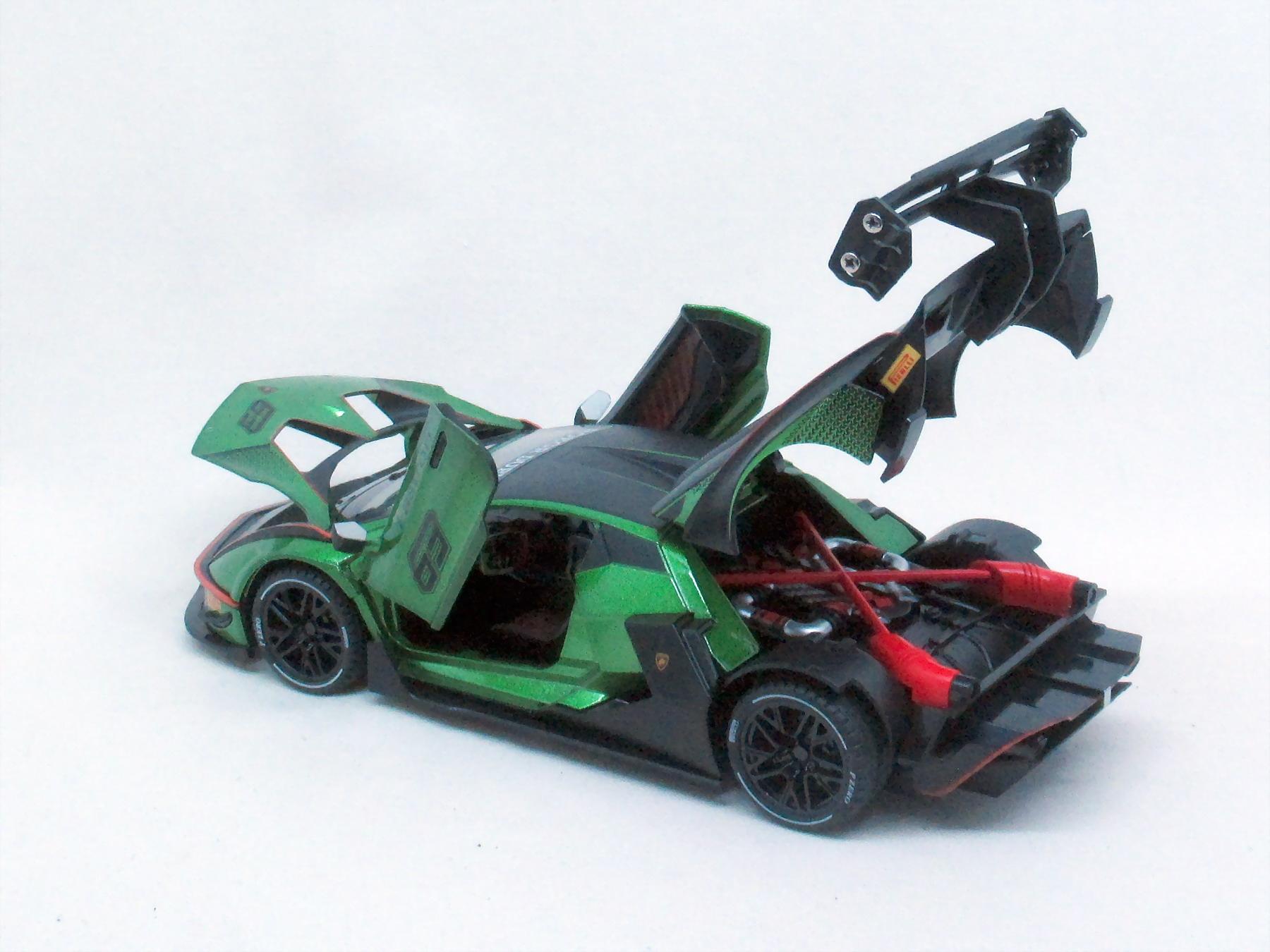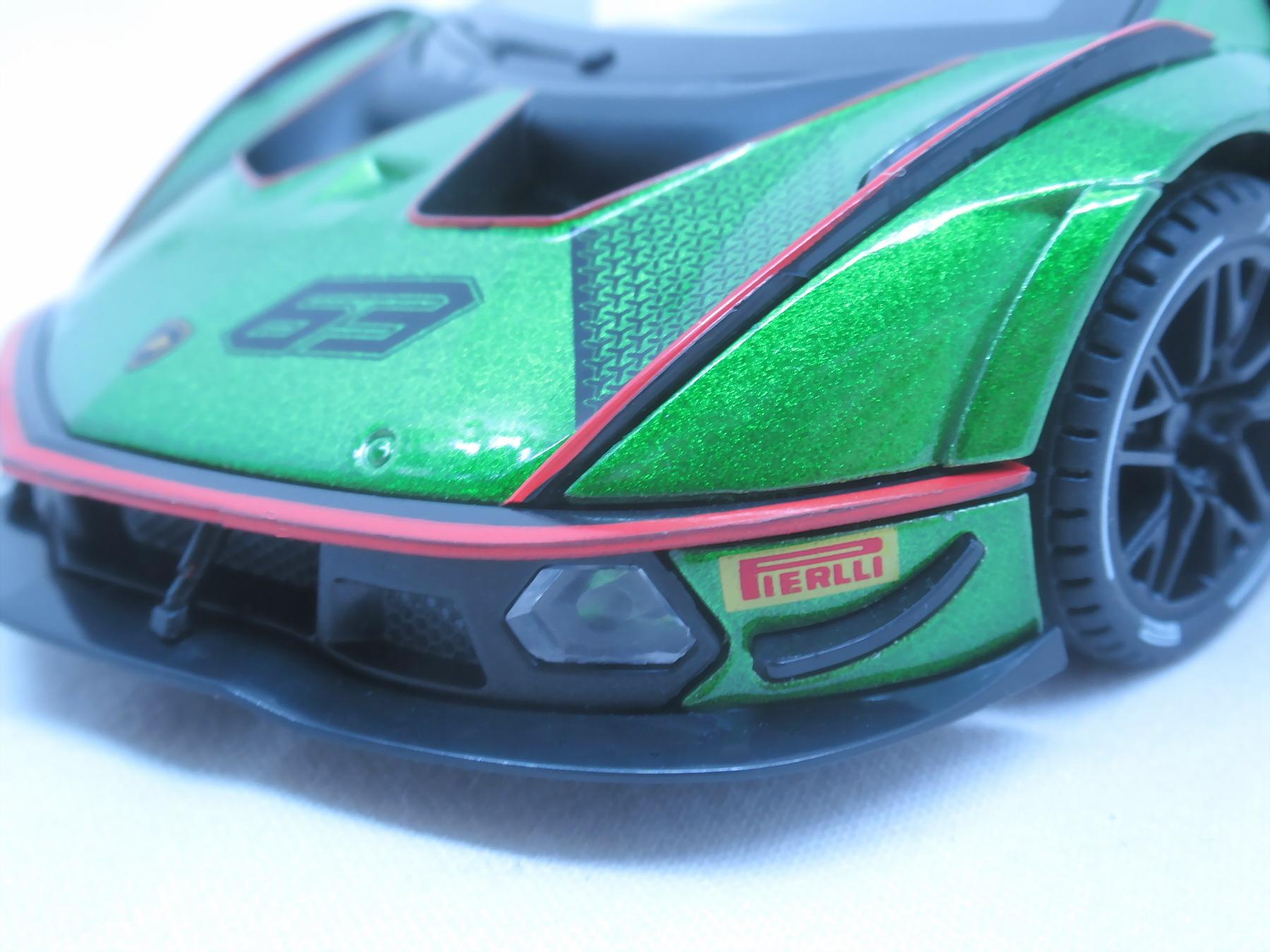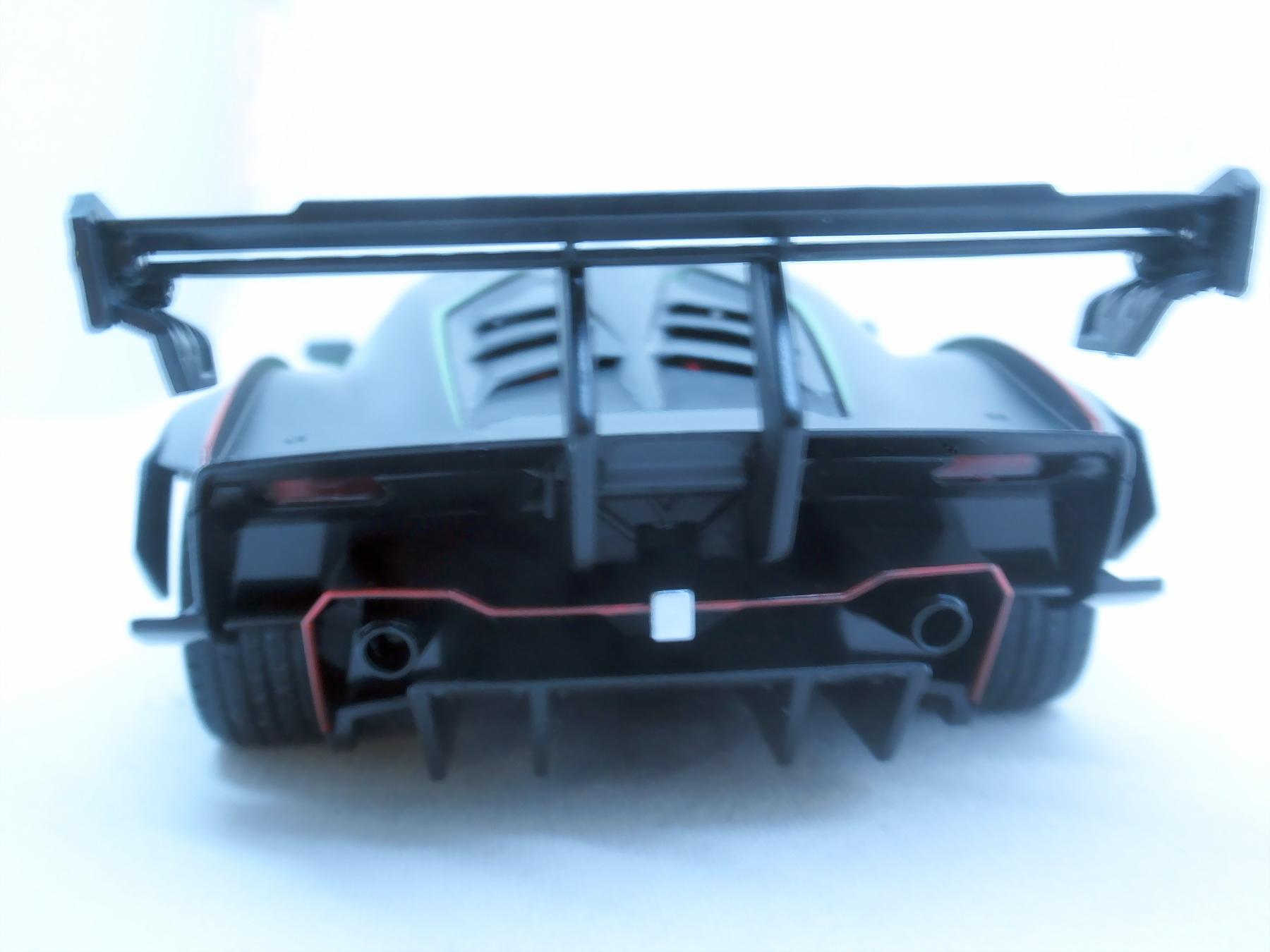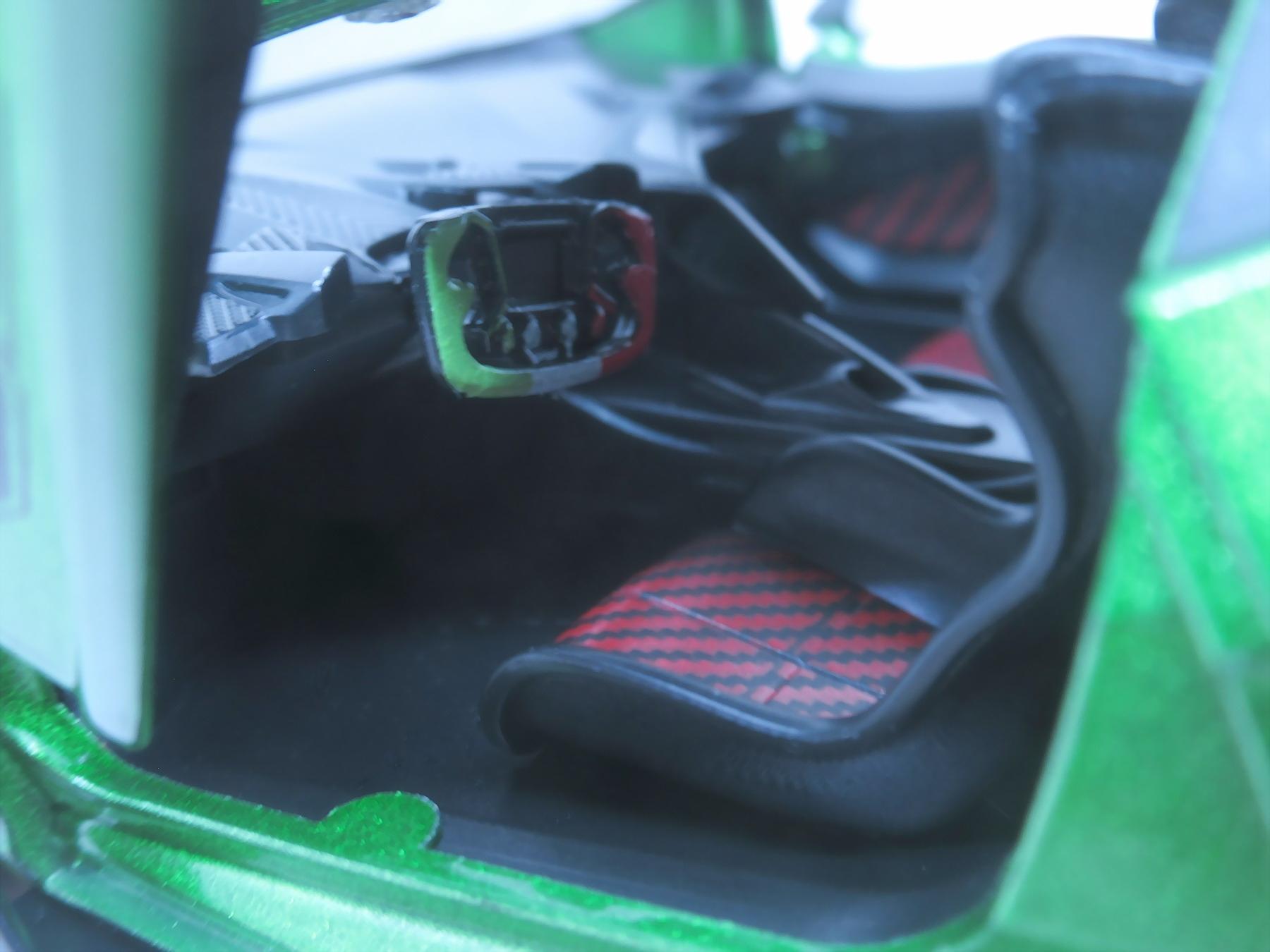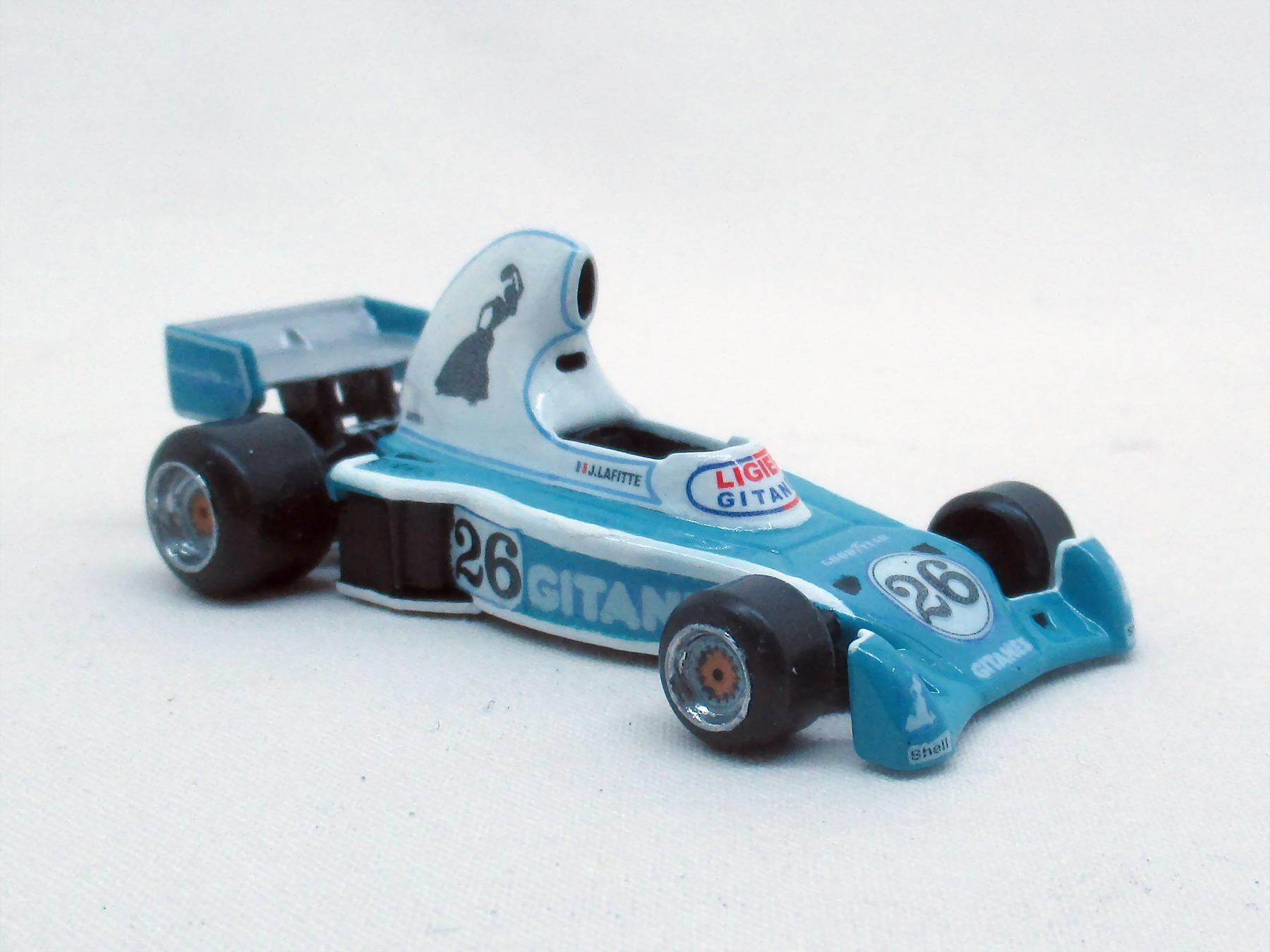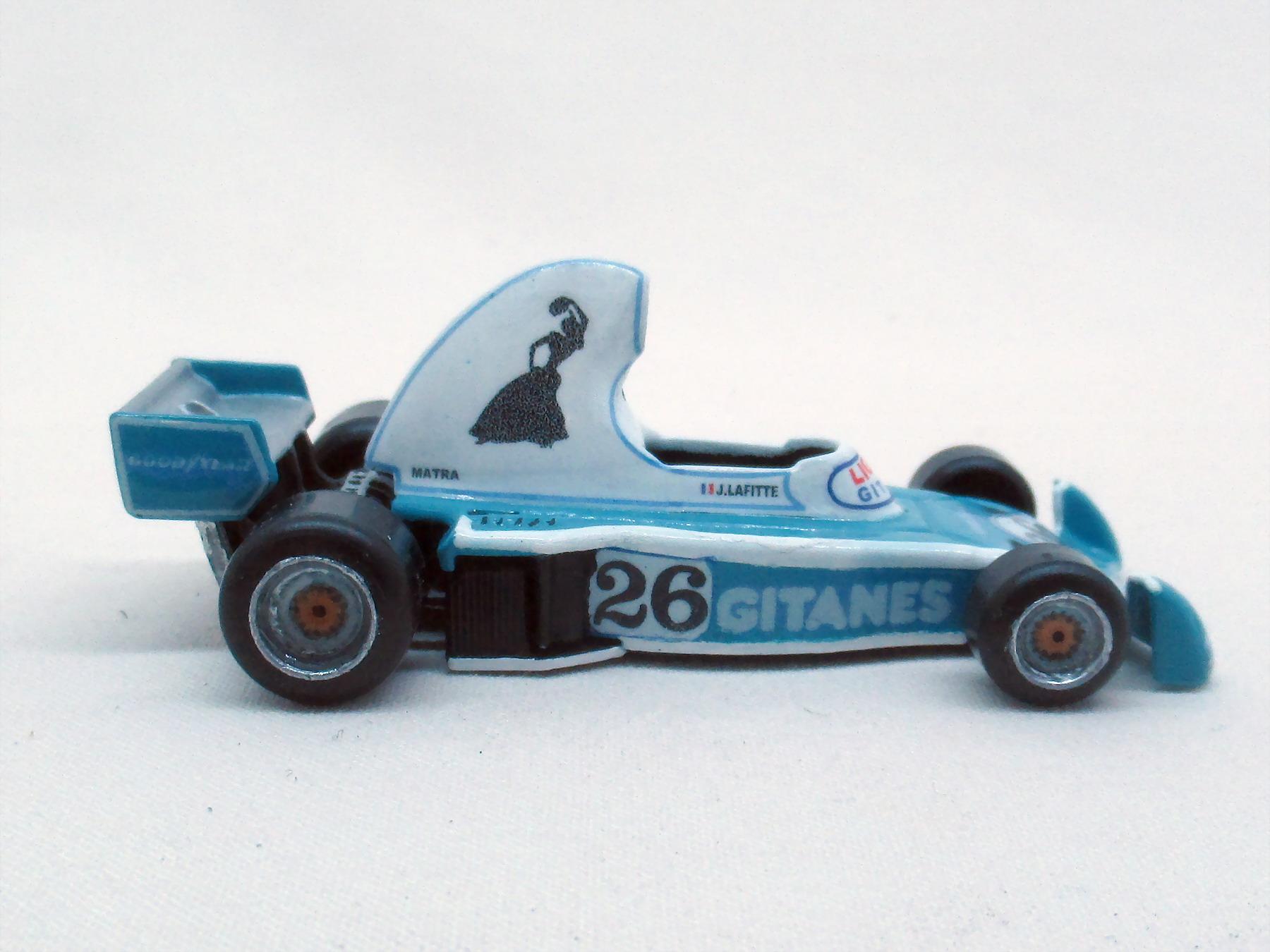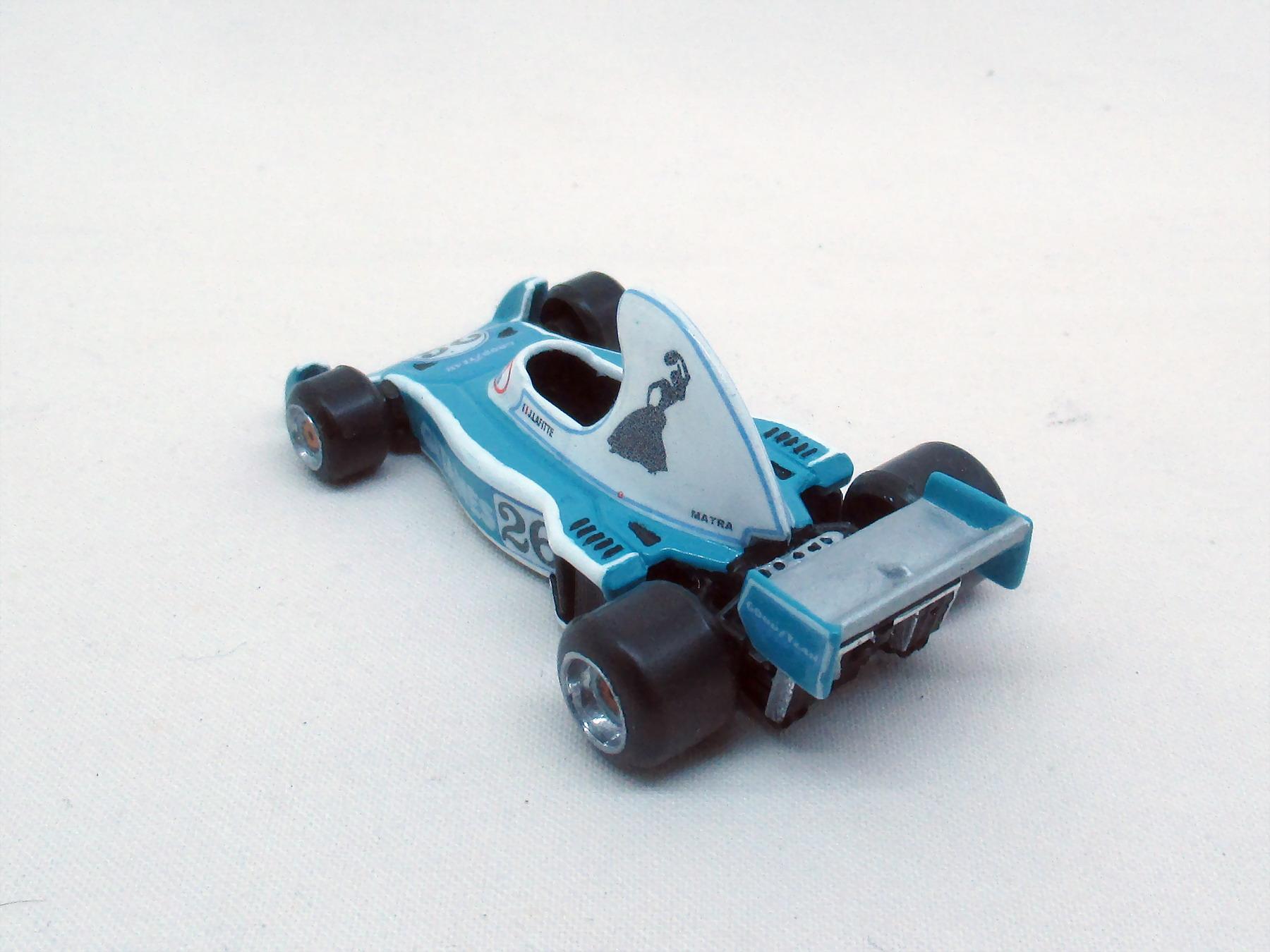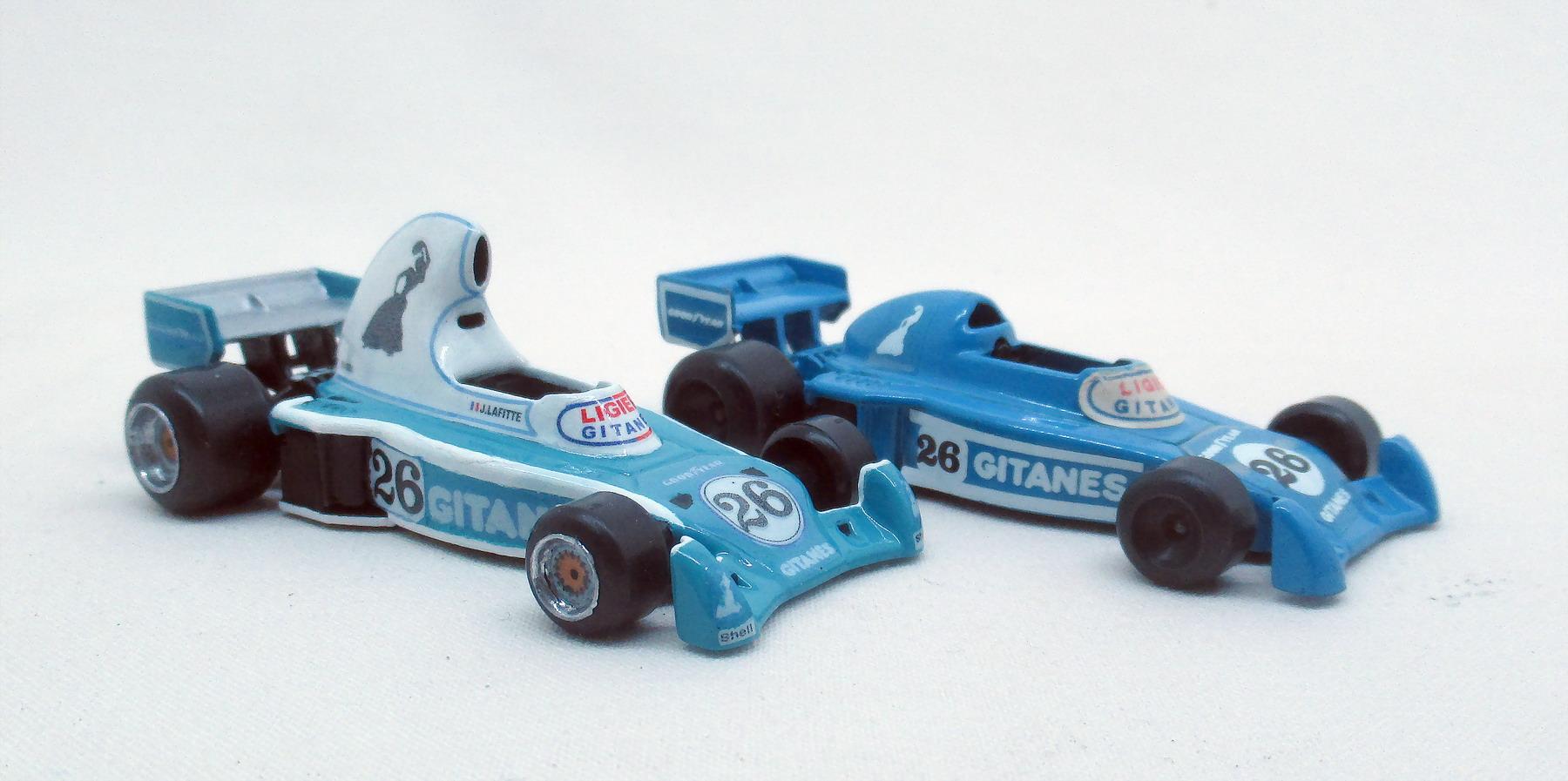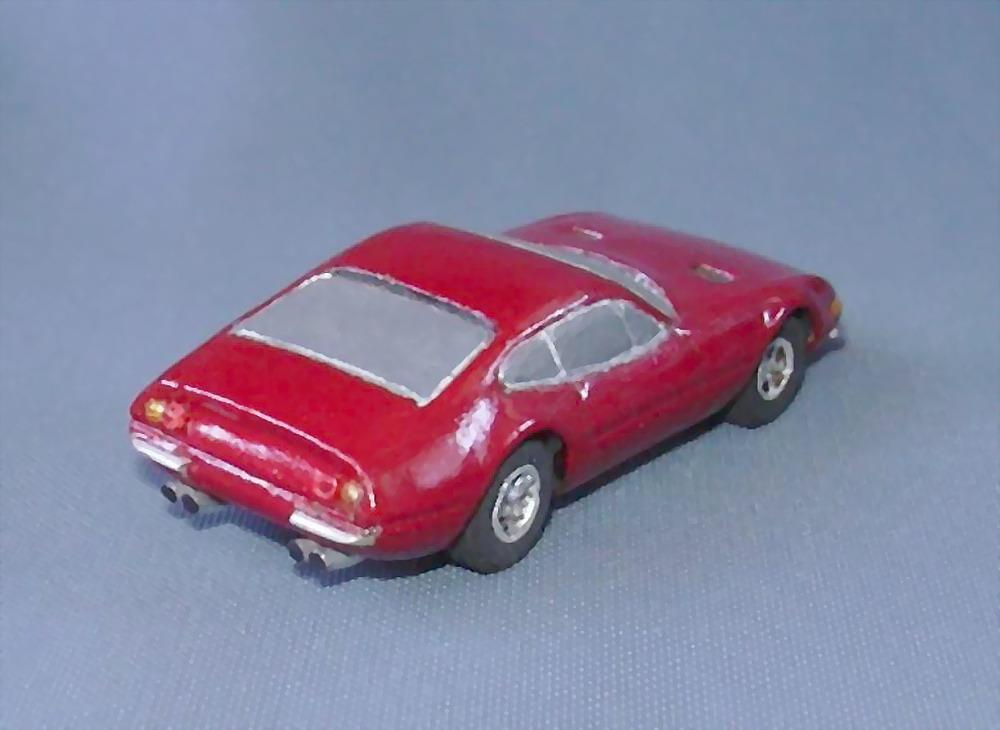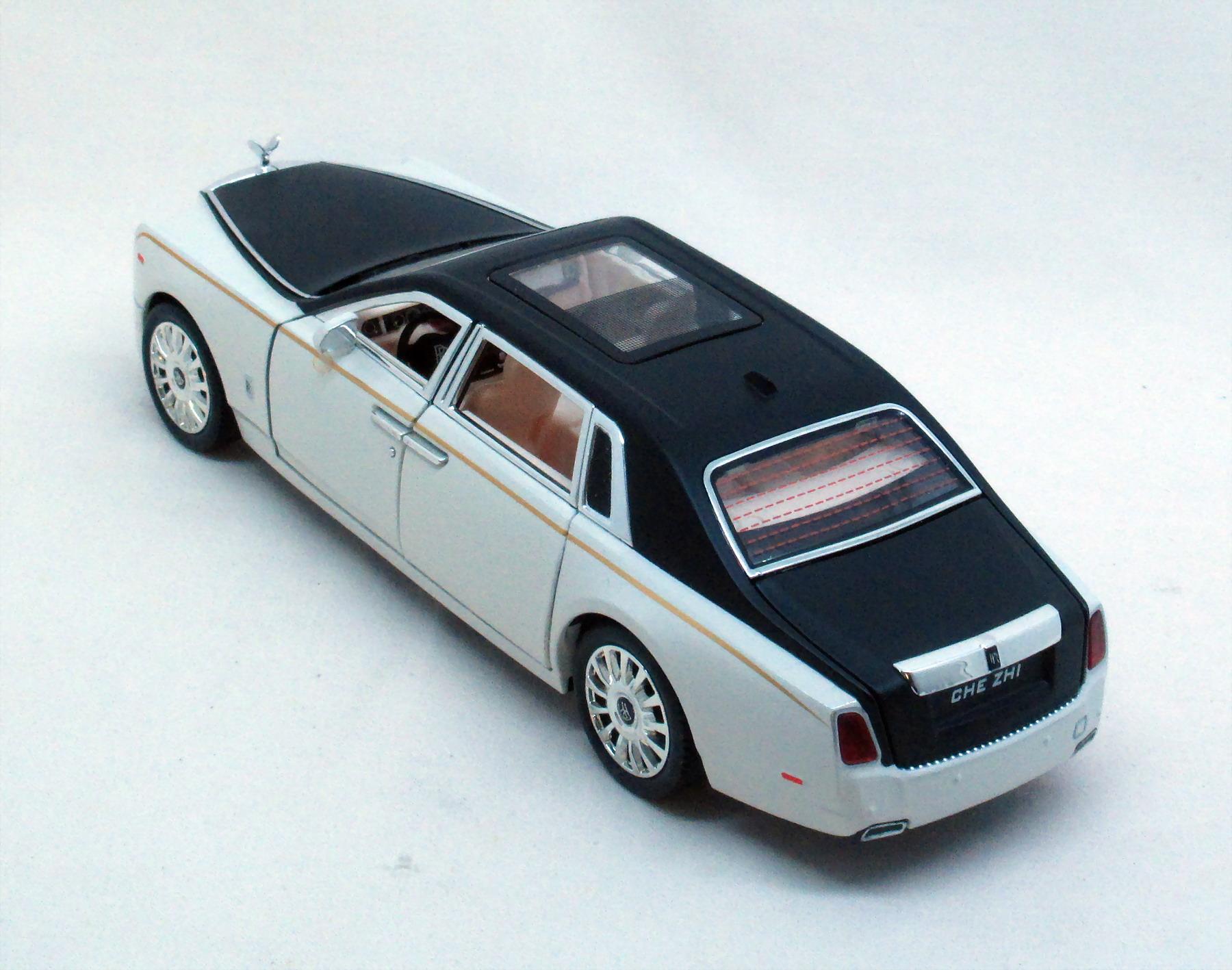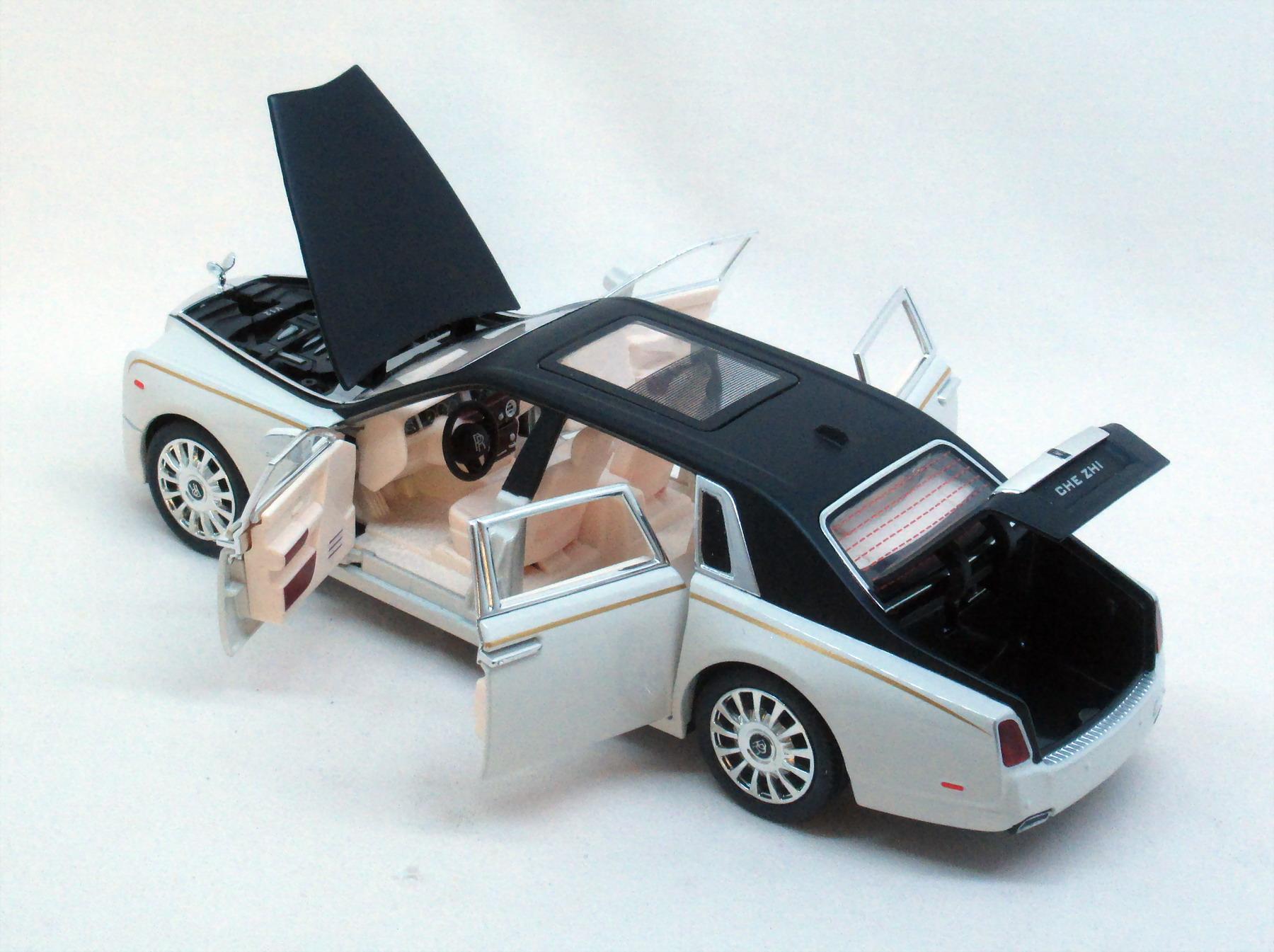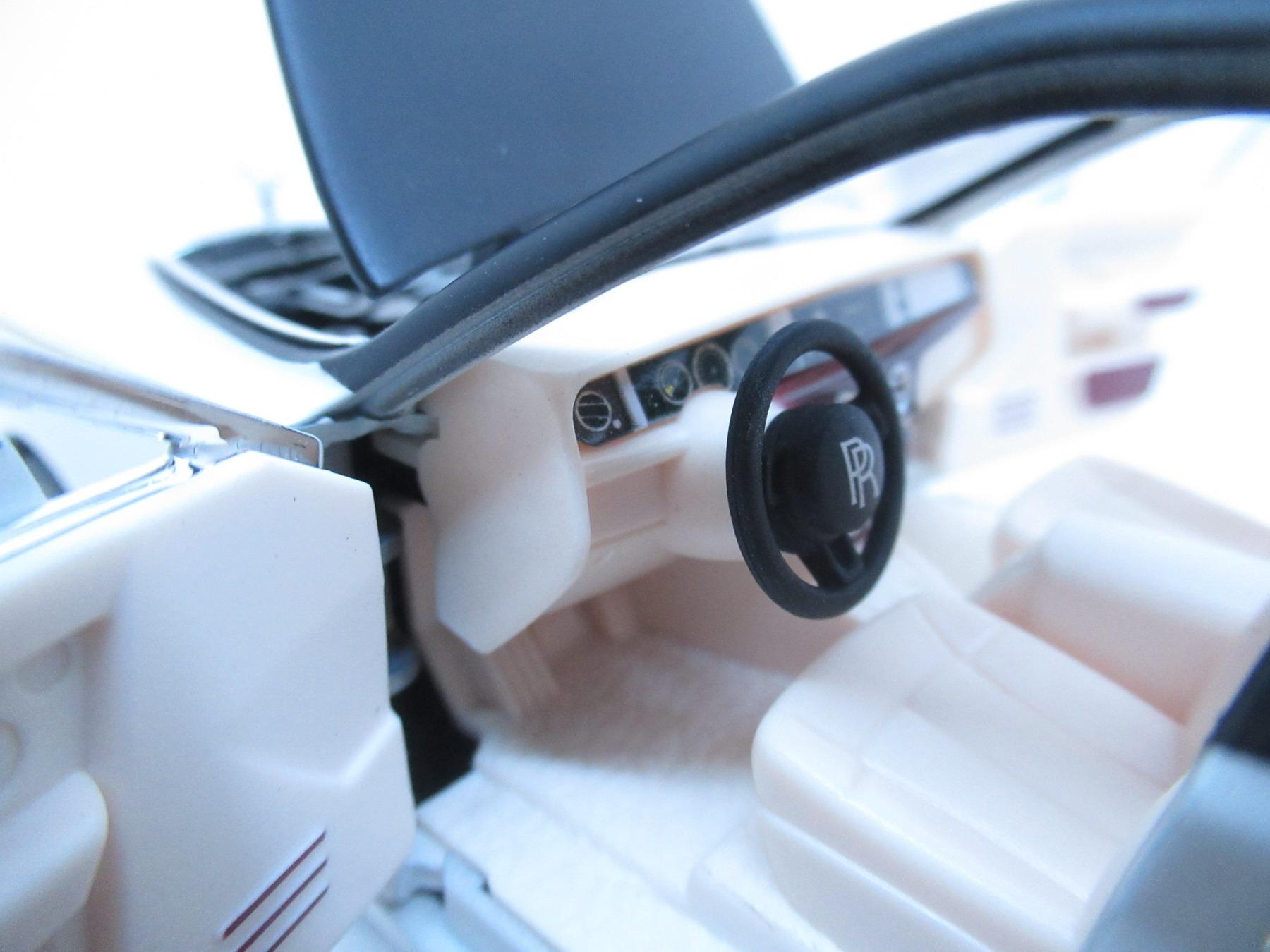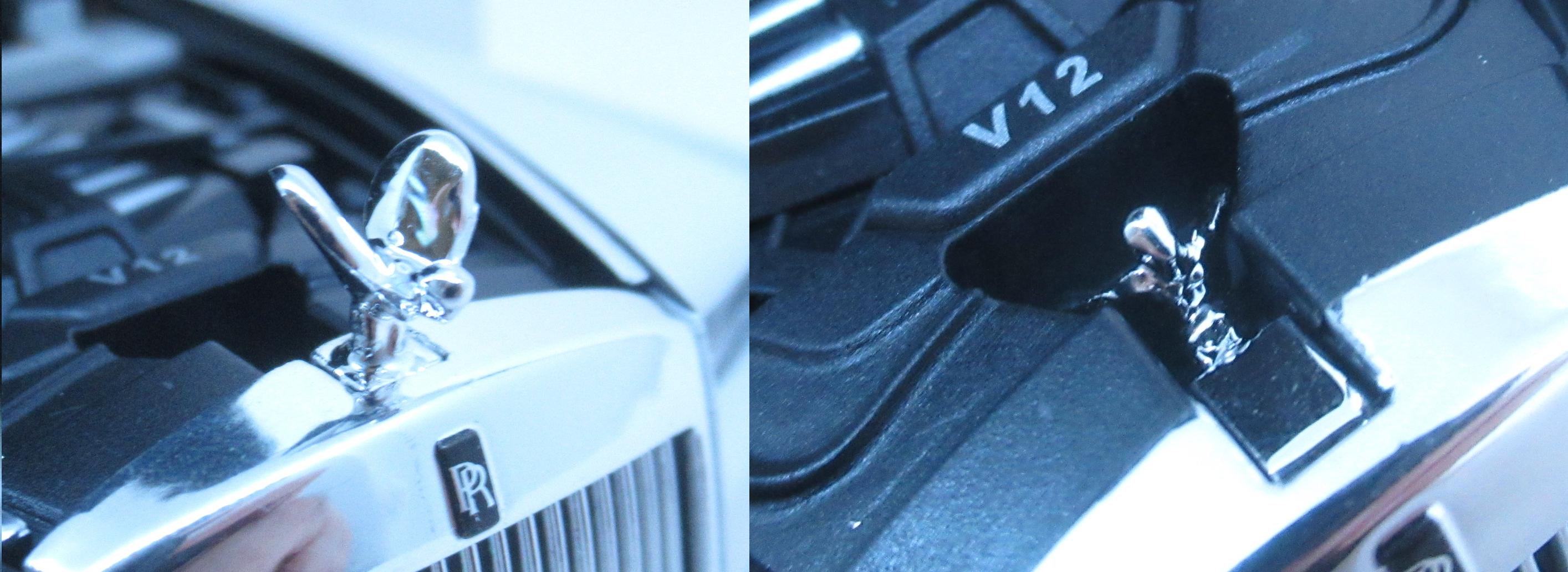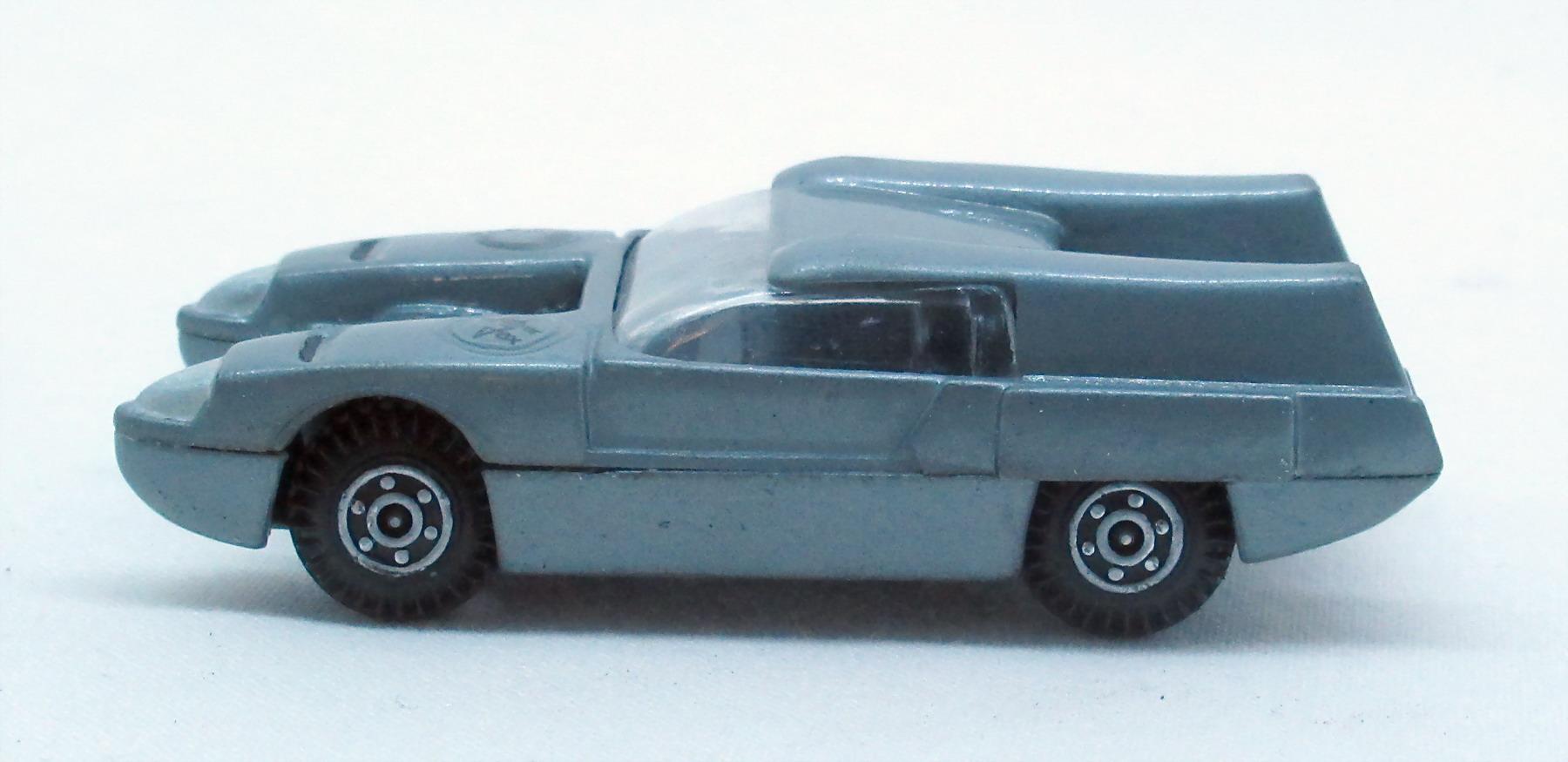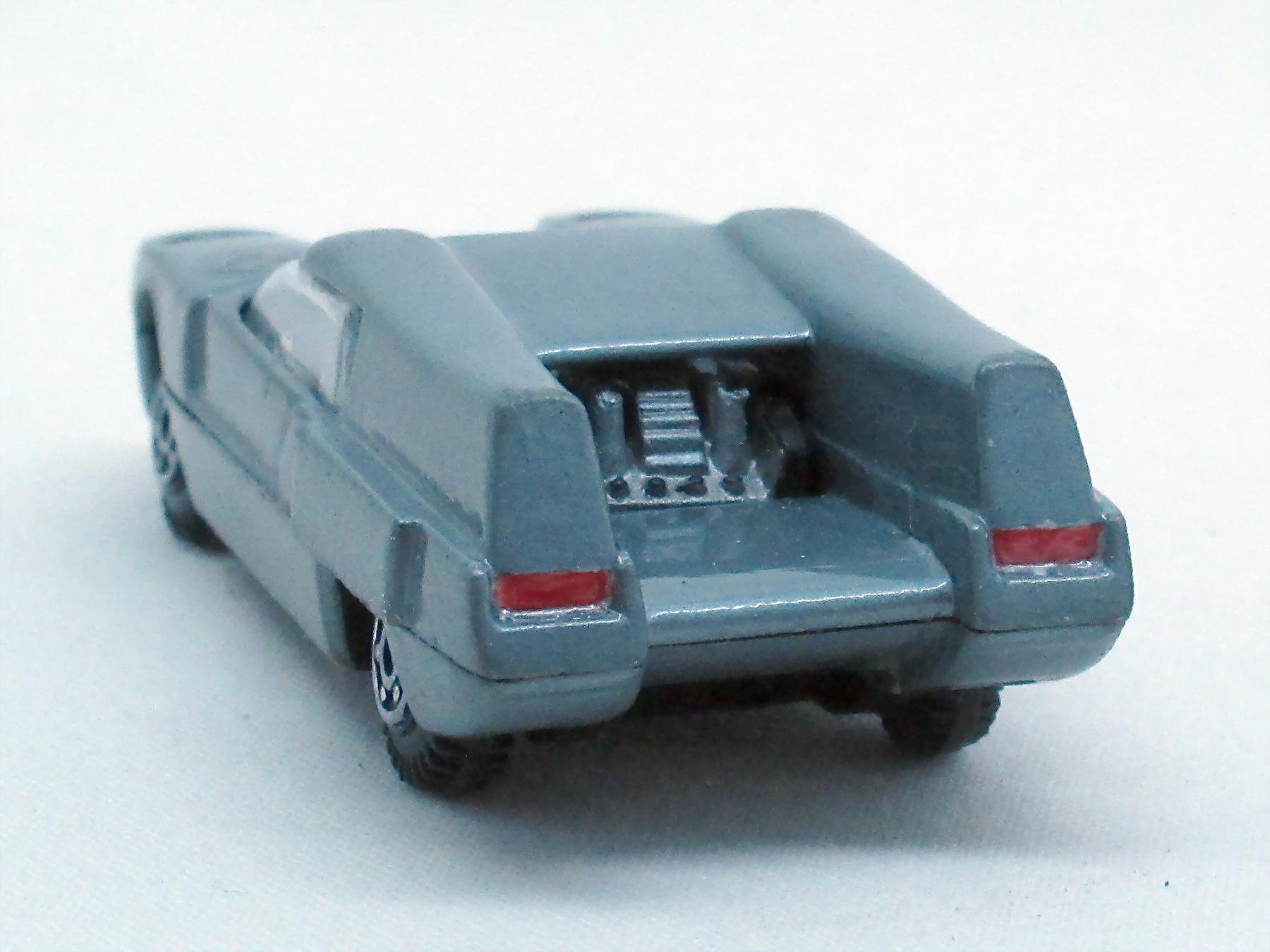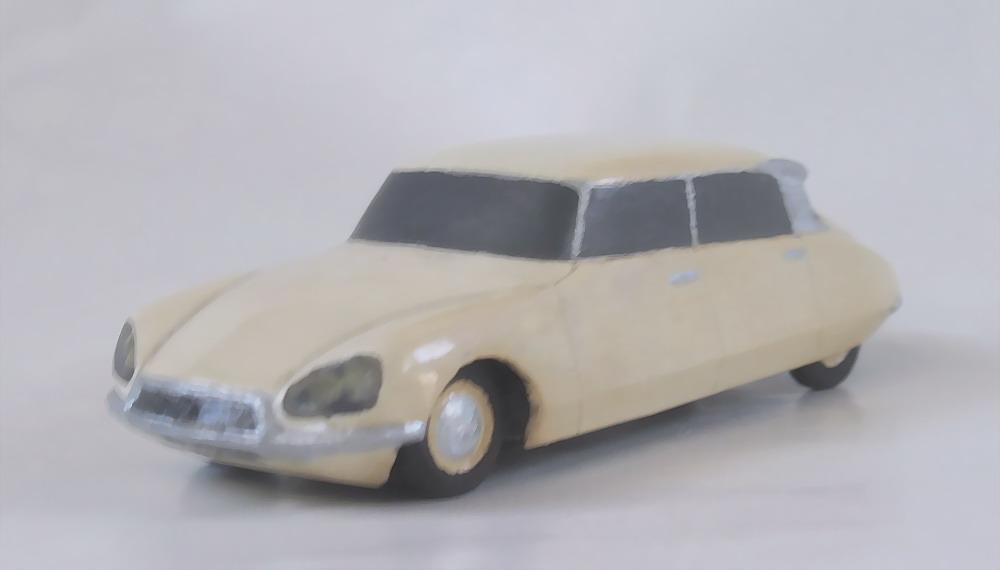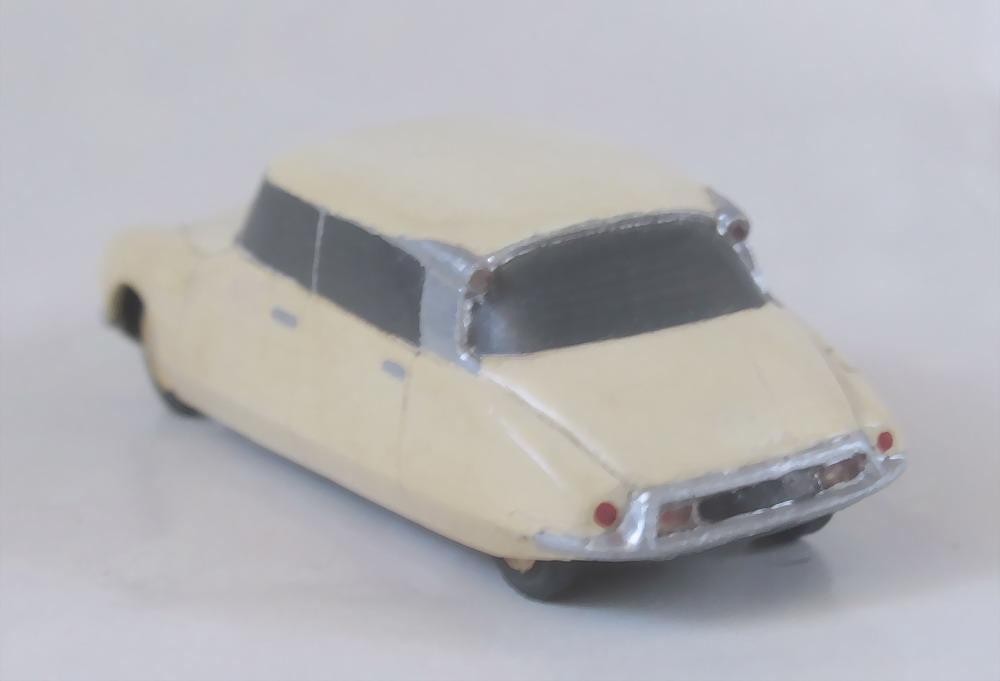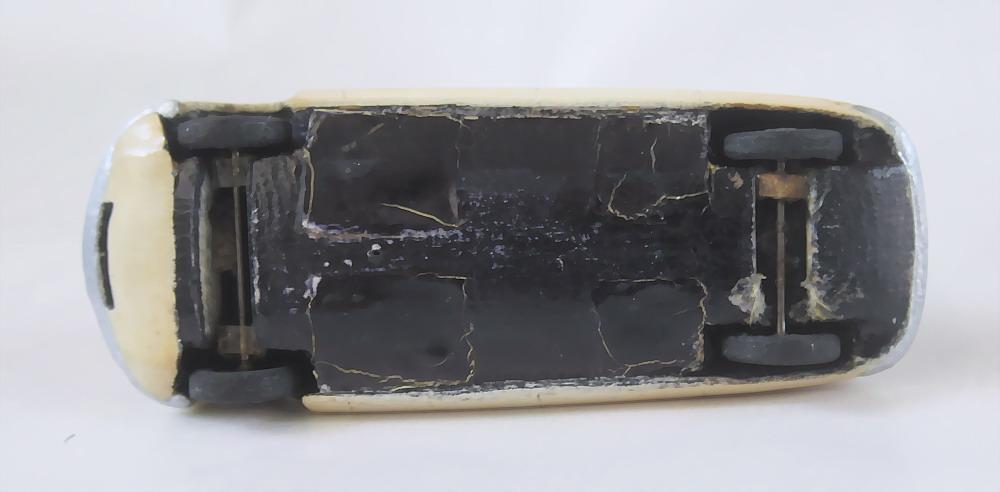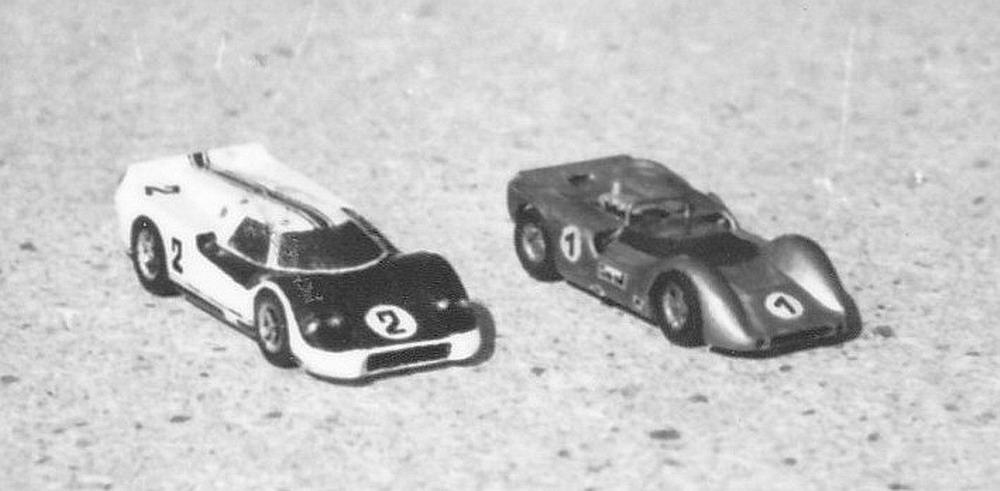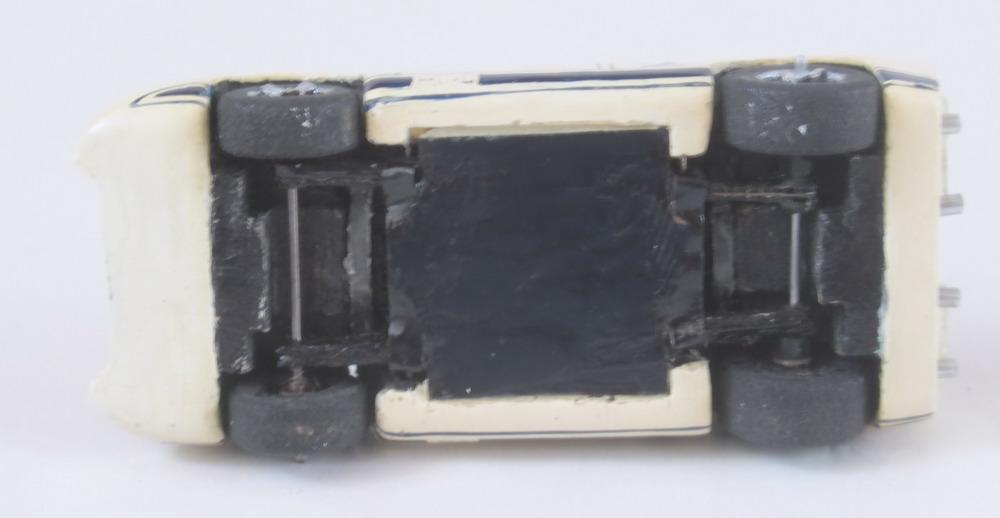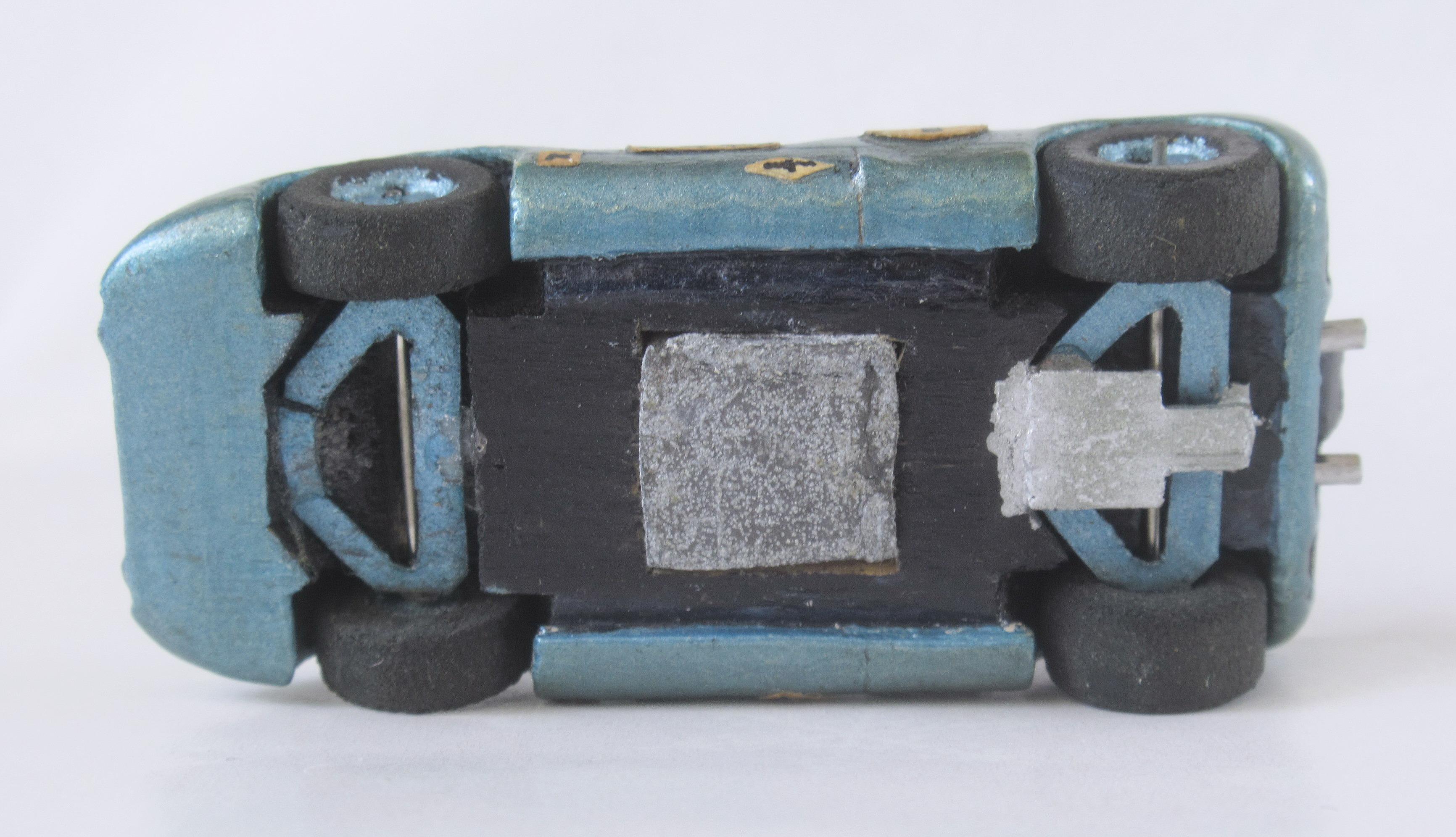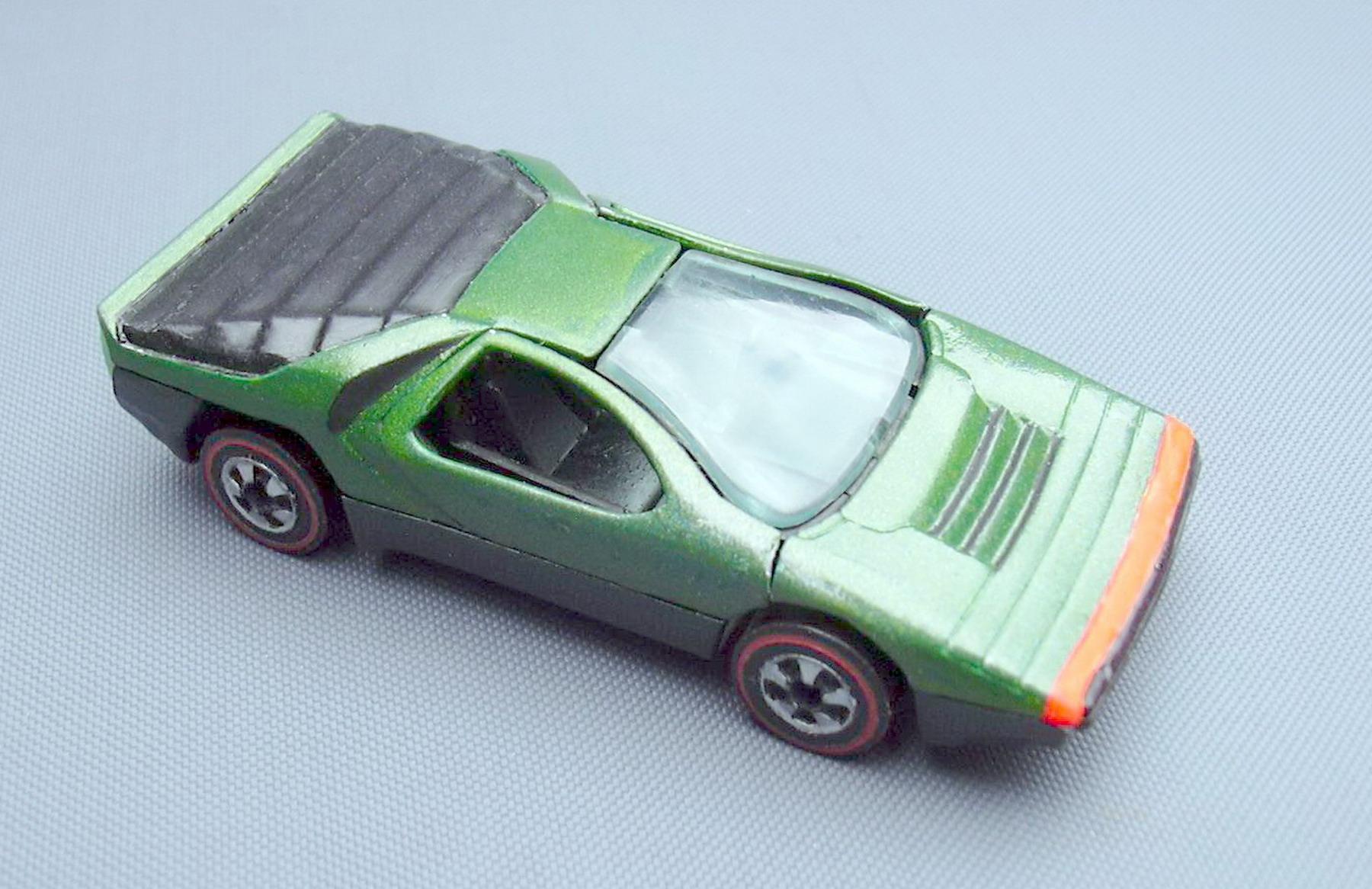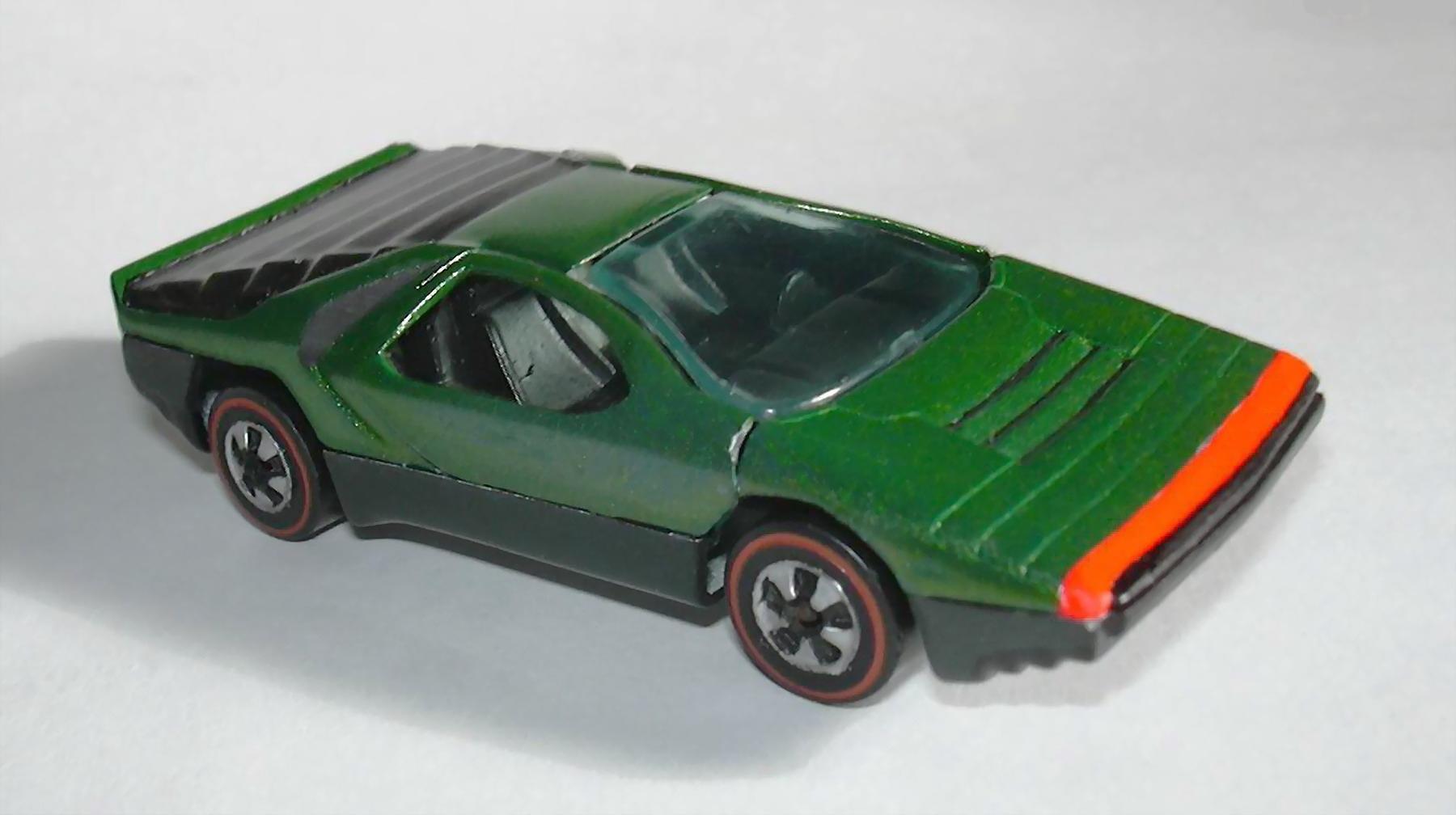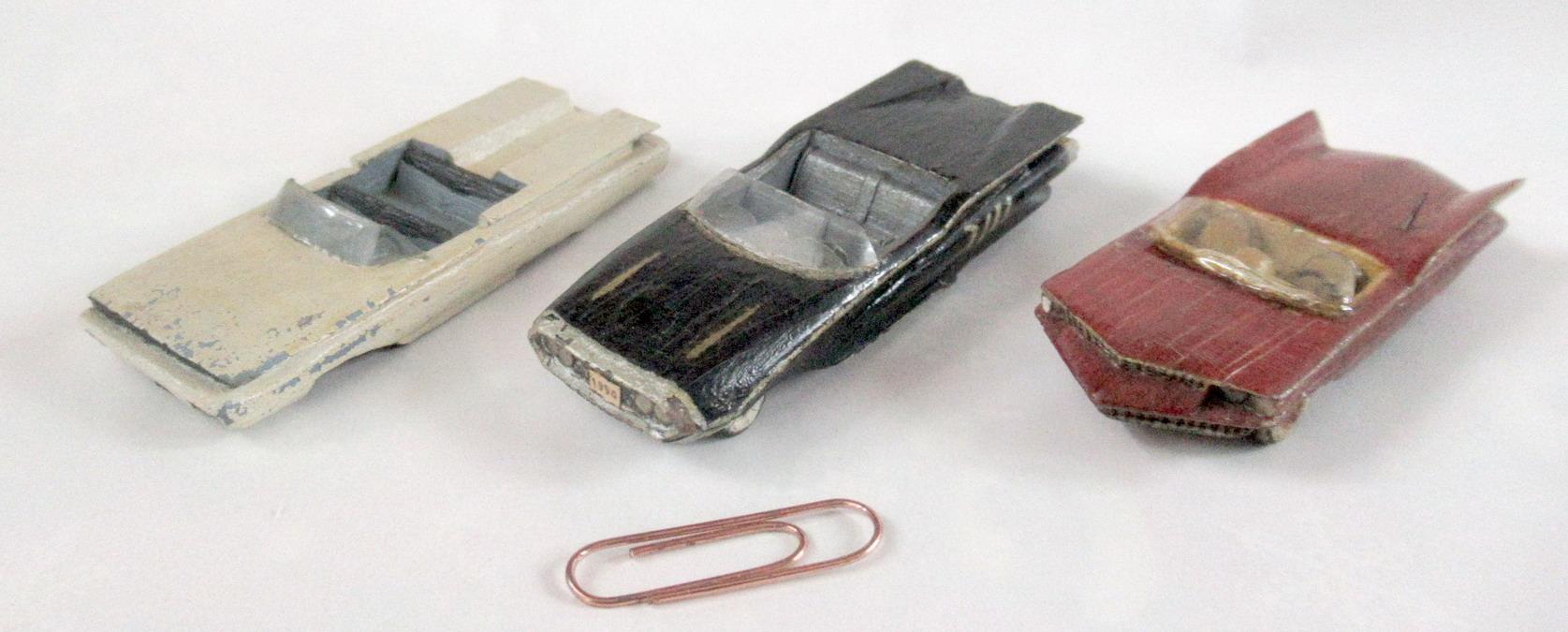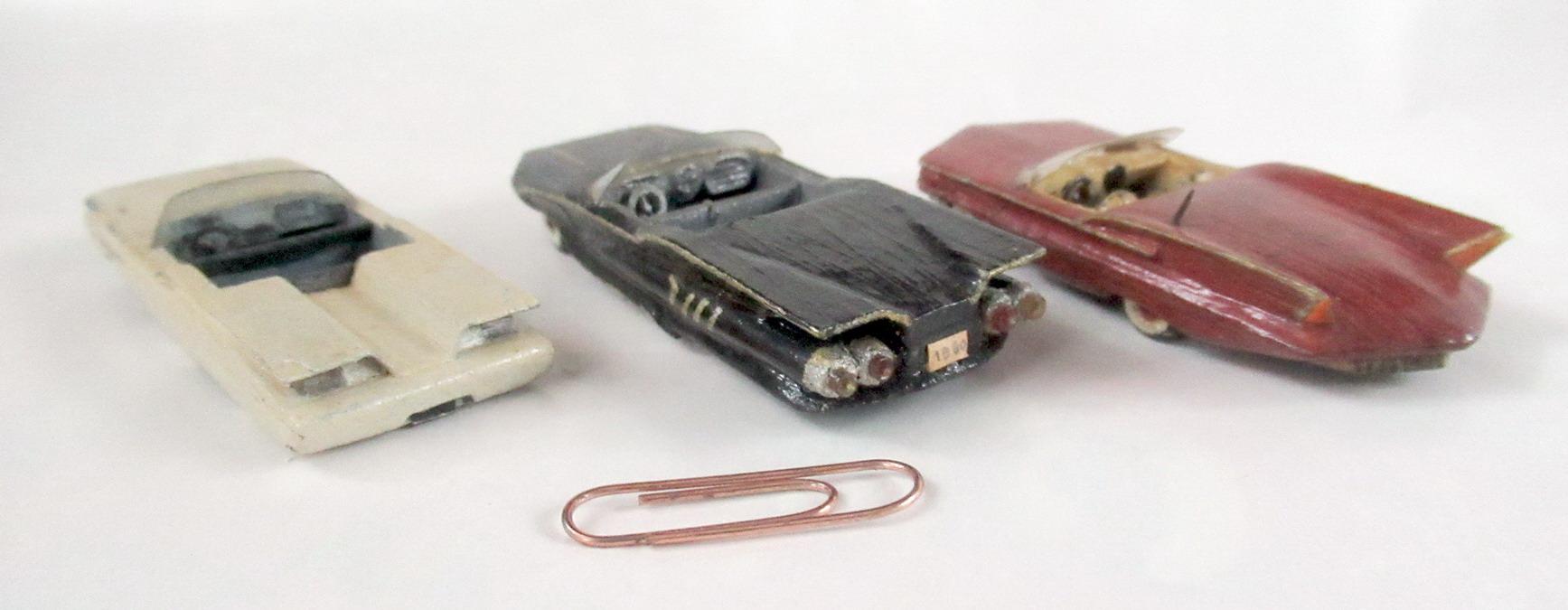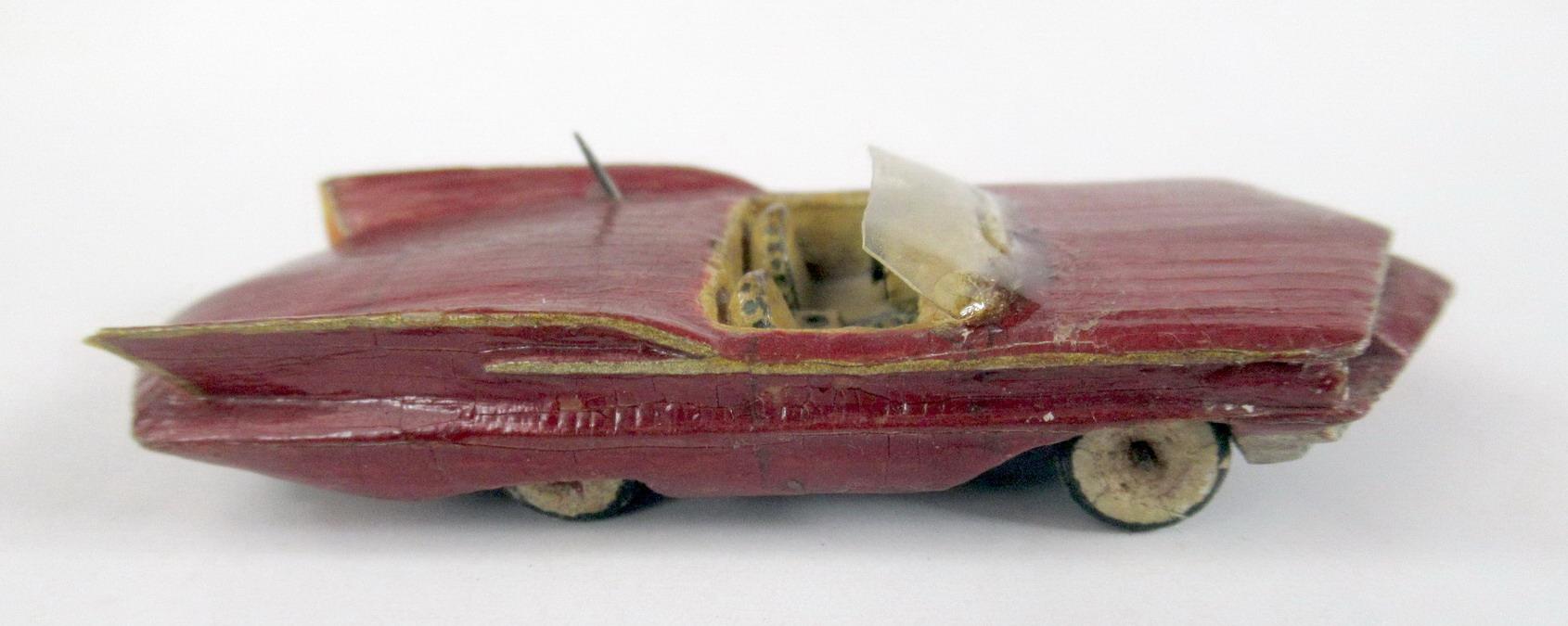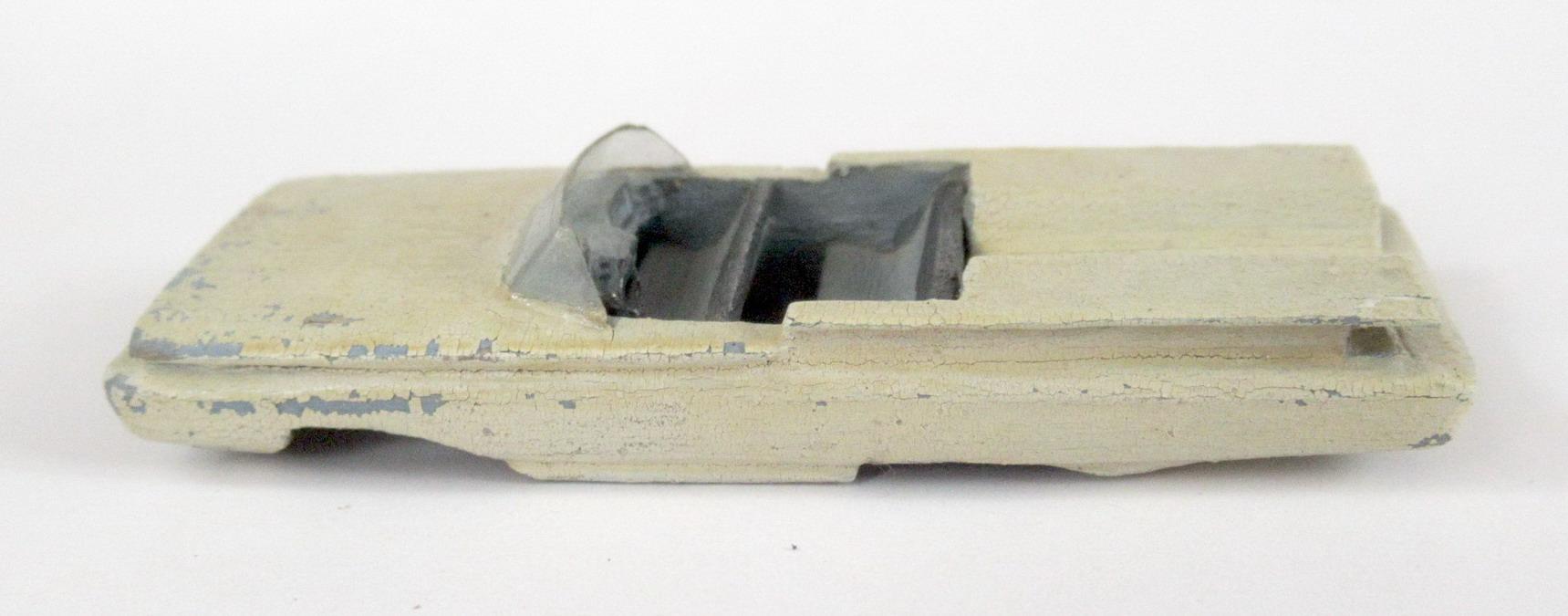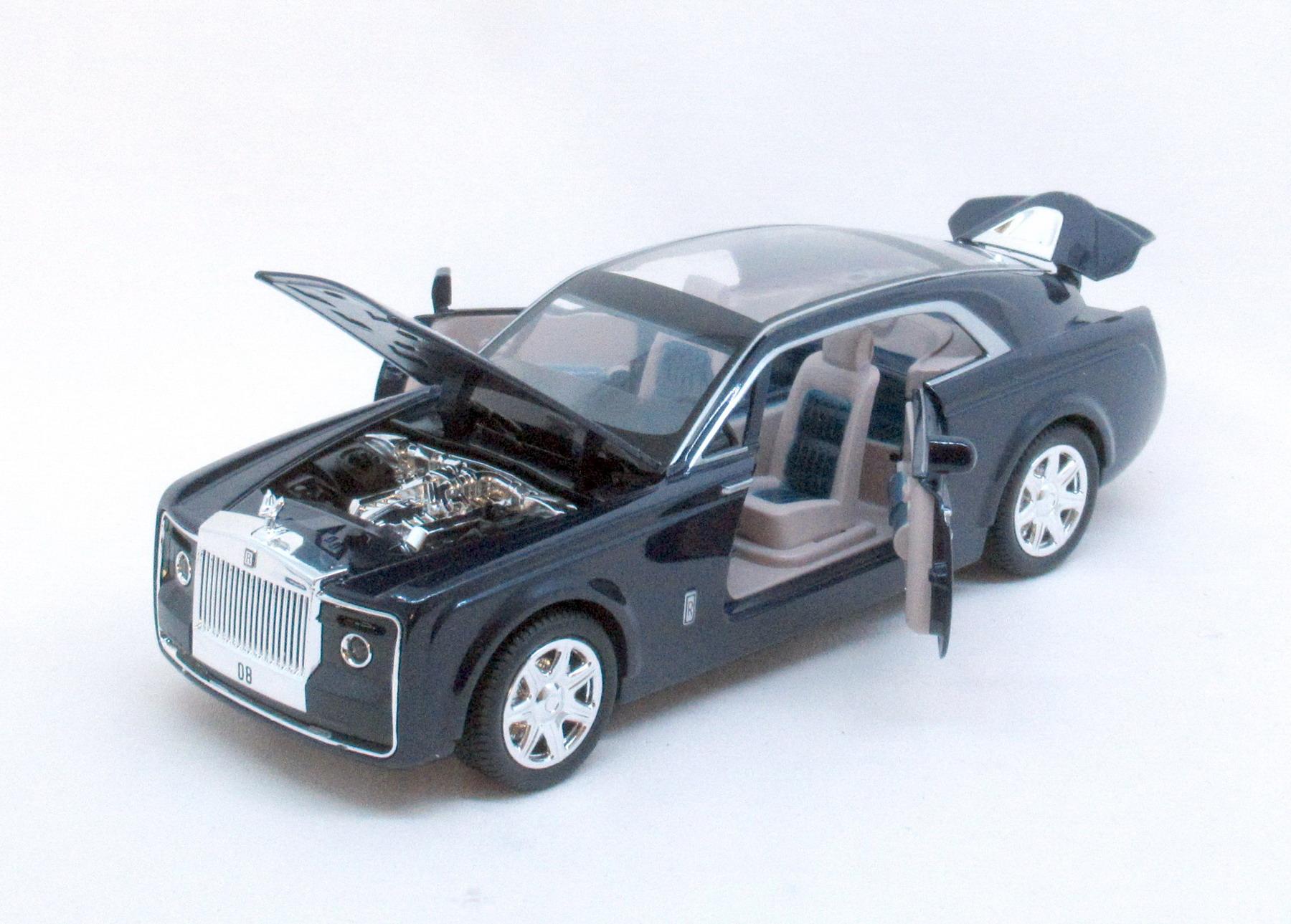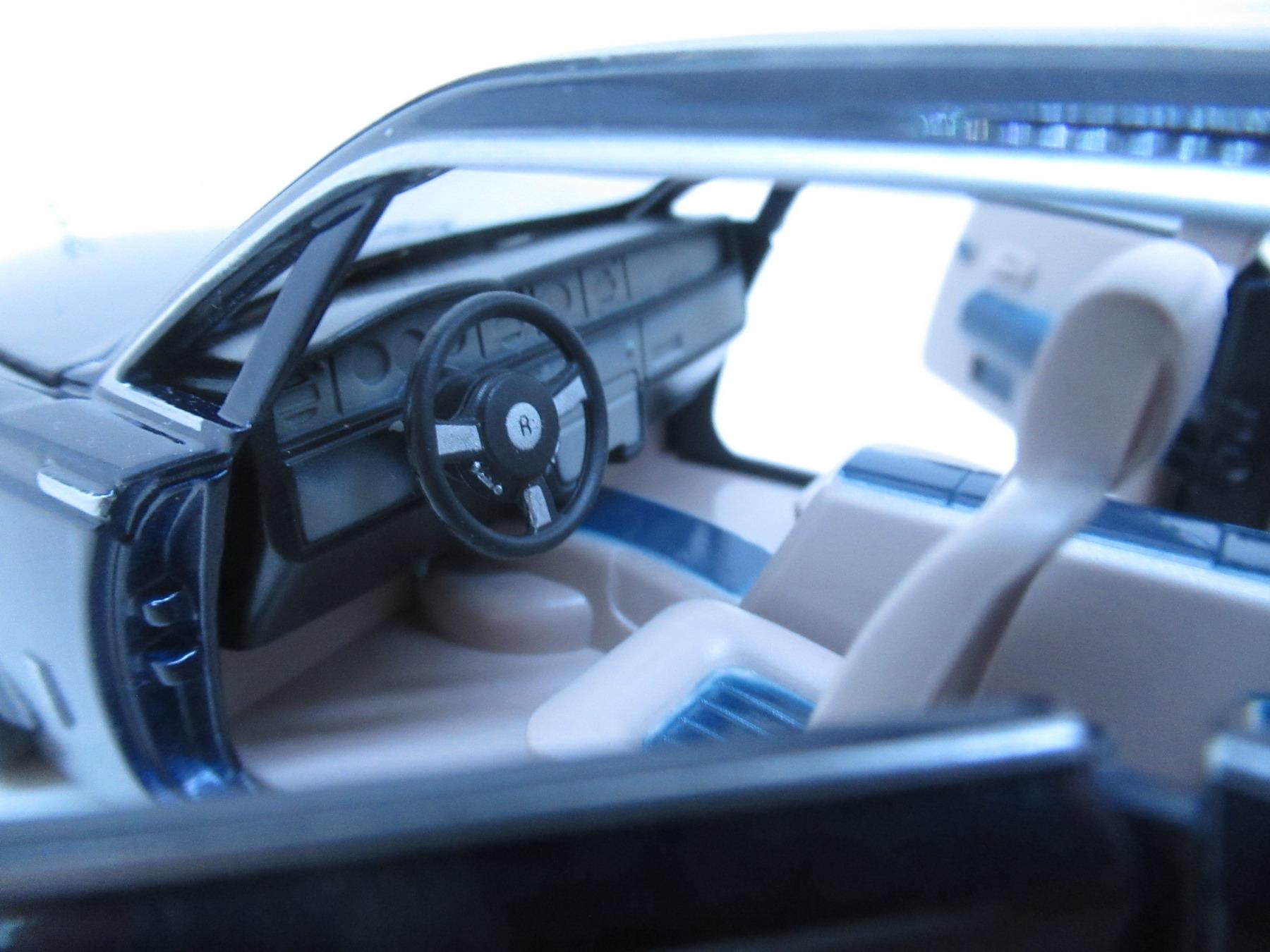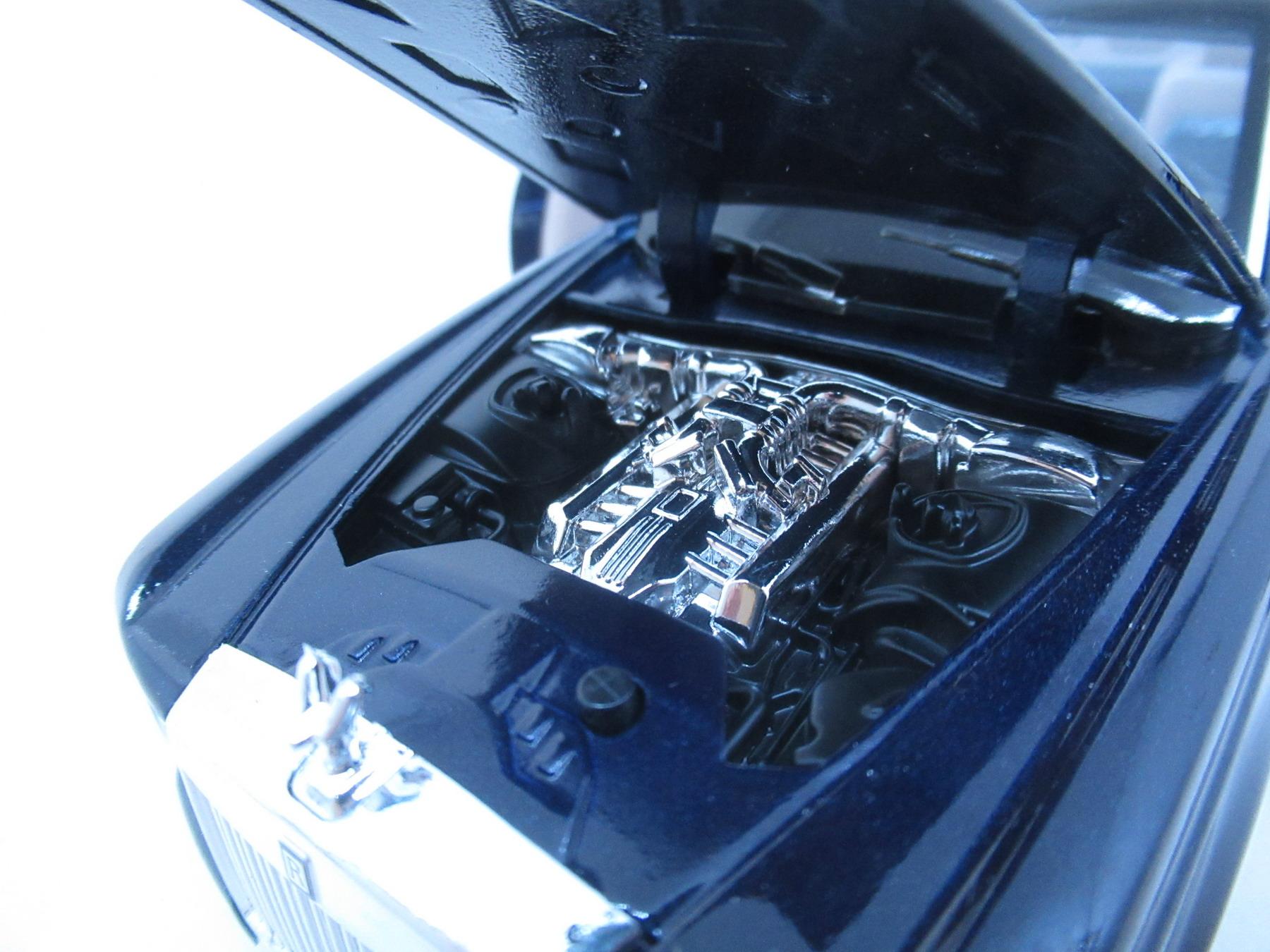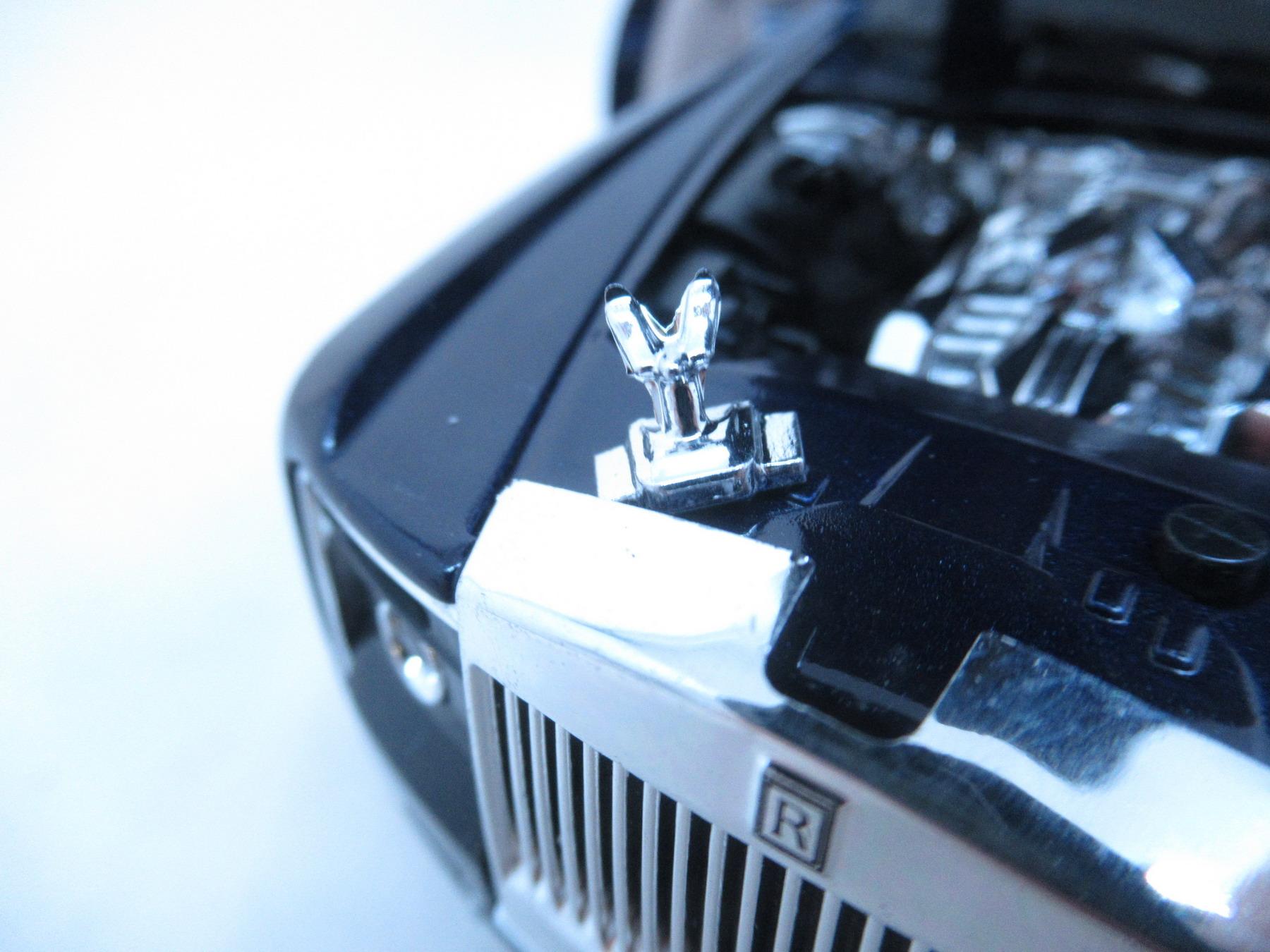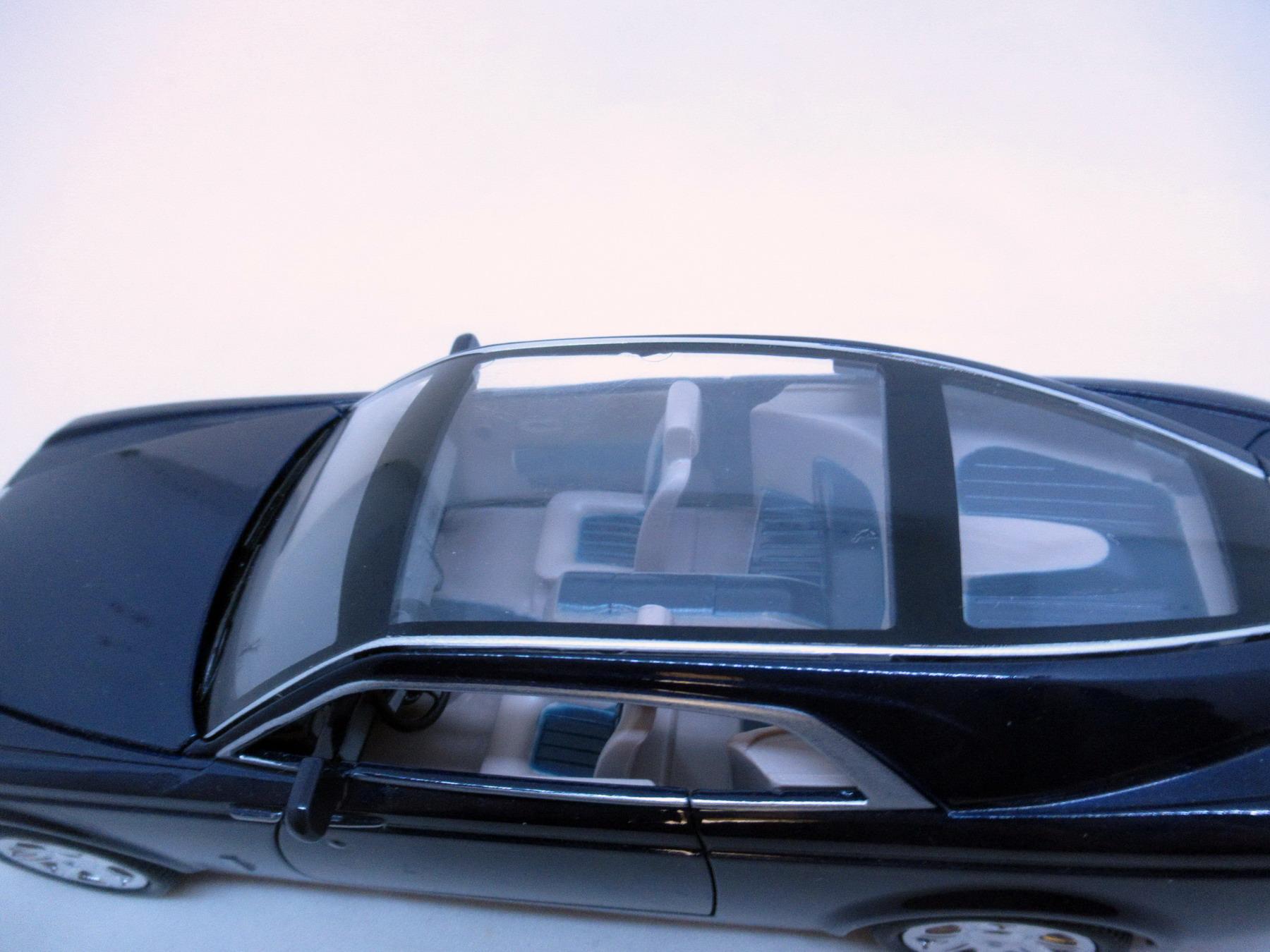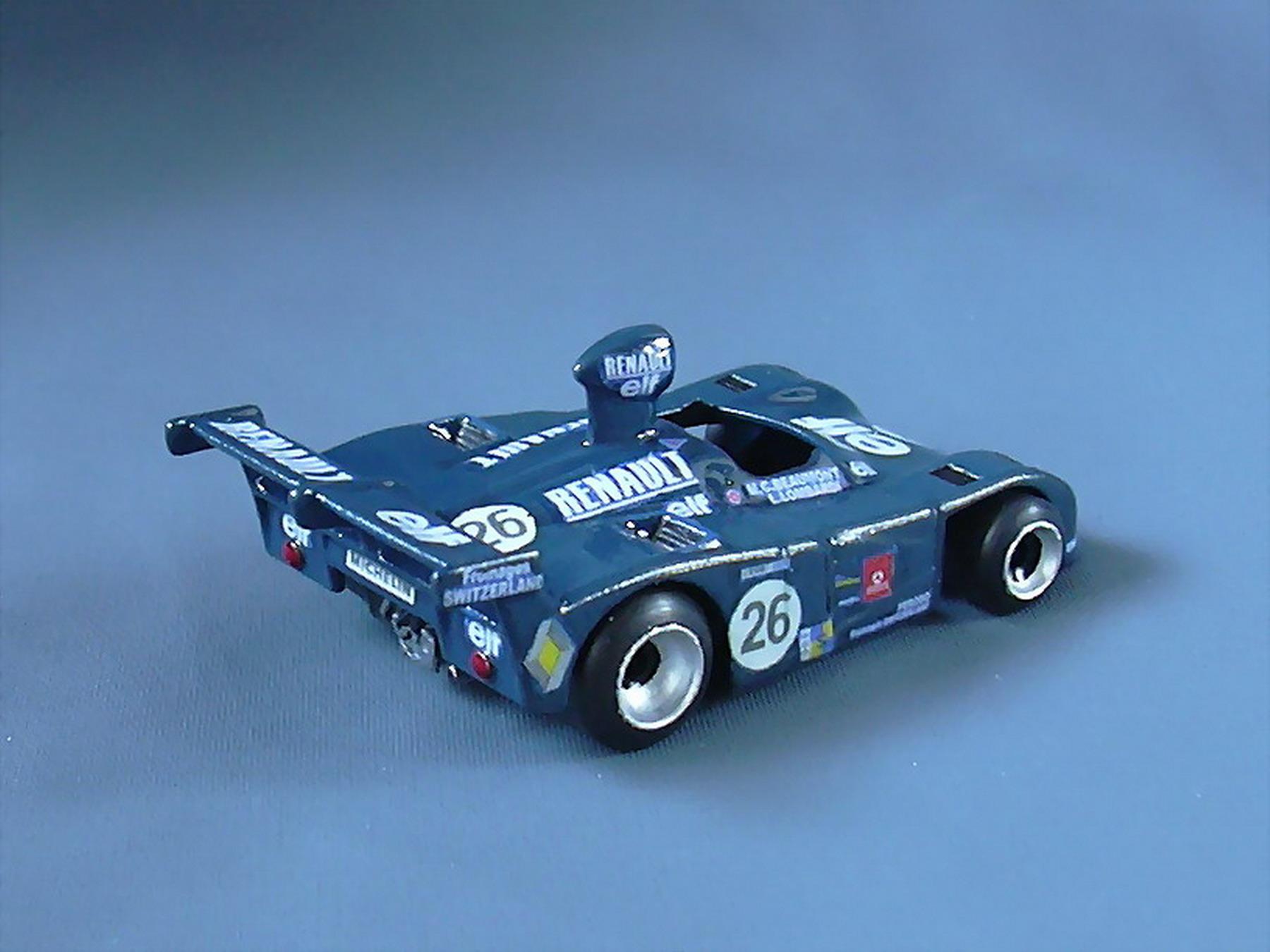-
Posts
481 -
Joined
-
Last visited
Content Type
Profiles
Forums
Events
Gallery
Everything posted by caapa
-
Hi, if you have some concpt cars 1:24 please send mephotos too. Many thanks in advance, János
-
Yes. The BAT cars are high in my favorits list. But the BAT 11 I don`t like so much. So I didn`t curved one model.
- 447 replies
-
- conceptcar
- showcar
-
(and 1 more)
Tagged with:
-
Chevrolet Corvette Sting Ray Racing Special (XP-87) 1959 It was originally conceived as a race car, rather than the concours queen it has become. Bill Mitchell - then Vice President for Design at GM - in 1959 decided to pay the princely sum of one dollar to bring the test mule Corvette SS out of a premature retirement. But being a designer, wanted to flaunt some of his team’s aesthetic creativity. The after-hours project took place in the ‘Hammer Room’: a secret work area hidden behind a tool room. The car had the fuel-injected 4.6-litre V8 producing 311 bhp and arrived 155 mph top speed. It made its debut at the Maryland Marlboro Raceway at the hands of ‘Flying Dentist’ Dick Thompson, and narrowly missed out on a podium finish. The Stingray reportedly had a tendency to ‘take off’ beyond 140 mph, with its aerodynamics failing to provide enough downforce at the front end. Subsequent modifications were made, which proved successful enough for Thompson and his steed to bring home their class championship during the 1960 SCCA season. At last the GM bosses showing interest in turning it into an official show car for the company. The model made by Auto-Art scale 1:18. I was lucky to get it with a rather good price cut in a toy shop. Enjoy the pictures.
- 447 replies
-
- 2
-

-
- conceptcar
- showcar
-
(and 1 more)
Tagged with:
-
Yes, it is at Hotwheels during the presentation of the Gas Monkey Corvette in 1:1 and 1:64. Richard Rawlings and his Technical Direktor might start the 1:64 variant from a 4 m high Hotwheels track. Richard was the winner of race.
-
Rolls Royce Phantom VI 1972 The Phantom VI was produced with an engine 6230 cc, 244 HP connected to a 4-speed automatic and arrived 180 km/h top speed. Only 374 units were built between 1968 and 1990. This particular unit was built by Mulliner Park Ward with electric windows and rear seats, black and white television, separate FM radio and air conditioning for front and rear compartments, a drinks cabinet and an intercom and telephone system. The car includes a radio station and transmissions too used by police. The car was owned at some point by a former princess from the Middle East and got this colour combo. She used this car in Paris and has travelled 9,906 miles only. The car is now in the Tiriac Collection in Romania which is the only current gallery that features all 7 Phantom models of the I-VII series. The model is made by Tomica 1:78 as a Phantom V. But the last Phantom VI was built by special order of the Sultan of Brunei in 1995 even so it was named Rolls Royce Phantom V Limousine. So I betought that I may name the Tomica Phantom V after the custom painting as Phantom VI. Enjoy the pictures.
- 447 replies
-
- 2
-

-
- conceptcar
- showcar
-
(and 1 more)
Tagged with:
-
Great looking car in the race livery. The wheels are superb. Are they full resin or wired with metal wire ? As street car it isn`t attractiv so much.
-
Thank you Gary the nice comment. The cars were a great success in 1988 when I show tham on a model car exhibishon. Two magazins reportrs are wrot about my 1:75 scale works.
- 447 replies
-
- conceptcar
- showcar
-
(and 1 more)
Tagged with:
-
1-75 story 05 Alfa Romeo BAT 5, BAT 7, BAT 9 Bertone concepts, 1953 – 1954 – 1955 The cars originated from a joint collaboration project between Alfa Romeo and the Italian design house Bertone and designed by Franco Scaglione. Alfa Romeo commissioned three concept vehicles to research the effects of drag on a vehicle. Each of the BAT cars (Berlina Aerodinamica Technica) based on an about 100 HP 4 cylinder engine with a 5 speed gearbox. The BAT 5 arrived 200 km/h with its 0.23 drag coefficient. For the BAT 7 Bertone added elements from his experience working in the aeronautical industry. The front was lowered and the the tail fins were larger and more curved. The result is a drag coefficient 0.19, an achievement even by today's standards. The BAT 9 was designed more like to the then current Alfa Romeo models than the other BATs. All three original BATs have been restored. After some appearances at car shows and museum they were sold as one lot on an auction for US$14.840 million. The models are curved from wood as the earlier ones but they got a bubble of transparent plastic and so were more really models with windows and interieur too. Enjoy the pictures.
- 447 replies
-
- 3
-

-

-
- conceptcar
- showcar
-
(and 1 more)
Tagged with:
-
Lamborghini Essenza SC V12 2020 The Essenza is a track-only sports car, produced by Squadra Corse racing division of Lamborghini. It isn`t a racecar only built to ”race” in a series of special Essenza only track days at circuits around the world. Emanuele Pirro, the five-time Le Mans winner who helped develop the car is on hand to give advice to Essenza owners. The car is based on Aventador SVJ but with a lot of differencies.The car is powered by a version of Lamborghini’s long-serving 6.5-liter naturally aspirated V-12, running without catalysts and now making 819 HP. It is the most powerful and the last purely naturally-aspirated car built by Lamborghini. The car is 136 kg lighter than the Aventador SVJ and features a FIA approved carbon composite crash structure and a carbon fibre monocoque which is the first to be homologated without the use of metal roll cage. A journalist got a prototype of Essenza to test drive at Vallelunga, wearing a warning “Attenzione: Macchina Veloce,” or “Warning: Fast Car.” The model is made by Jiglifang/China 1:24 scale. Enjoy the pictures.
- 447 replies
-
- conceptcar
- showcar
-
(and 1 more)
Tagged with:
-
Ligier Matra JS5 1976 Guy Ligier, having secured backing from the French tobacco company SEITA, recruited Gérard Ducarouge constructor from Matra and set about preparing an entry for Formula One. The first car was ready for testing in November 1975 and was powered by the Matra MS73 V12 engine. The new French F2 champion Jacques Laffite proved much the quicker in testing as the experienced Jean-Pierre Beltoise, and secured the drive. The early races in 1976 were completed with the JS5 bearing a large airbox (earning the car the nickname of "Teapot") but changes in regulations following the 1976 Spanish Grand Prix saw this drastically downsized. The improved car arrived good results in the season. By the end Ligier, with 20 points, placed sixth in the Constructor's Championship and Laffite was seventh in the Driver's Championship. The model made by Polistil scale 1:55 primarily. I loved that great airbox since 1976 but there was no model of this in 3” range. Not long ago I found a blueprint of this car in internet. As I had two original Polistil cars I converted one to the early version. I beveled the small airintake from the driver`s seat to the end of body above the engine. Curved the great one from wood and glued with epoxi putty. The livery was made by self made decals. Enjoy the pictures.
- 447 replies
-
- conceptcar
- showcar
-
(and 1 more)
Tagged with:
-
1:75 story 03 Lancia Stratos Zero Concept 1970 In 1969, Nuccio Bertone wished to expand his portfolio by getting Lancia’s attention, luring the company away from its long relationship with Pininfarina and Zagato. He bought a friend’s Lancia Fulvia which was damaged in an accident, but most of its mechanical components, including the engine and suspension, remained intact. Bertone planned to reinvent the Fulvia with a mid-engine layout, so it was capable of competing on the world rally stage against the Alpine A110 and Ford GT70. The project was handed to Bertone’s young prodigy Marcello Gandini who saw an opportunity to push his radical wedge design to the extreme. The car took the Turin Motor Show 1970 and catapulted its designer into superstardom. The model was made in usual way with rubber tyres but without any suspension. Ferrari 365 GTB4 Daytona 1968 Sleek and modern Pininfarina lines were matched with the 4.4-litre V12 engine 259 kW. The excellent weight distribution provided by the rear gearbox transaxle produced the rare balance of the car. The top speed was 280 km/h. The 365 GTB4 was a milestone in the history of extreme high-performance front-engined sports cars and a great concurrent of the „modern” mid-engined Lamborghini Miura. The unofficial Daytona name is reported to have been applied by the media and commemorates Ferrari's 1-2-3 finish in the 1967 24 Hours of Daytona. Ferrari itself only rarely refers to the 365 as the "Daytona". The model was made in usual way with rubber tyres but without any suspension.
- 447 replies
-
- conceptcar
- showcar
-
(and 1 more)
Tagged with:
-
Hi Steve, I`m happy you enjoy my models and the background stories.
- 447 replies
-
- 1
-

-
- conceptcar
- showcar
-
(and 1 more)
Tagged with:
-
Hi Gary, yes, this steering system seems rather curious. But if we think over: at low speed a "short wheelbase" make the car more agile in cornering. And the oposite turning the rear wheels make a shorter wheelbase virtually and give a greater agility and performance around corners. At high speeds you don`t need to "corner " but a good straight run is important. A "long wheelbase" is an advantage in this situation and the parallel turning the rear wheels with the front ones make a longer wheelbase virtually and ensure full control of the vehicle and excellent stability. The Lamborghini Aventador SVJ 2018 has a similar rear steering system.
- 447 replies
-
- conceptcar
- showcar
-
(and 1 more)
Tagged with:
-
Rolls Royce Phantom VIII 2018 Nearly 100 years since the first Rolls-Royce Phantom was unveiled. It is the longest continuously used model name in automotive history. The newest Phantom is the „pinnacle” of Rolls-Royce now. It has been in development for six years and is the first built on a bespoke aluminium spaceframe architecture. The suspension system is linked to a stereo camera mounted behind the windscreen. This scans the road ahead and preconfigures the spring and damper rates, and the anti-roll bars, so as to improve ride quality. The Phantom VIII is the first Rolls-Royce to be fitted with four wheel steering. As the speed may be higher the rear wheels shall be turn counter, than don`t turn and at higher speed turn in the same direction as the front wheels. So the system abel to better manoeuvrability and increase high-speed stability too. The car uses "Silent-Seal" tyres co-developed with Continental. And it was only some little technical delicatessen and even not to mention the luxury ones. I think this car is just as a Rolls Royce should be. The model is made by Che-Zhi, China in 1:24 scale. The „protection” of Emily is even nearer to 1:1 solution: after open the hood you can lay back the ornament. Enjoy the pictures.
- 447 replies
-
- 1
-

-
- conceptcar
- showcar
-
(and 1 more)
Tagged with:
-
O.S.I. Silver Fox 1967 During the mid fifties Piero Taruffi – a race driver - got the idea to build a car with two hulls. The driver was sitting in one of tham the emgine was in the other one. They were connected and there was the radiator. It named ˇbisiluro” what takes twin-torpedo in italian. The Silver Fox is built according the same precept. The engine is placed behind the seat left slantwise. The driver seated right side. The two hulls are connected by the driver's cab and three tail units in the form of wings. The first of these can be adjusted as required while the vehicle is stationary in order to determine the strength of the downforce. The middle one can be adjusted while driving, the rear one is fixed. The ready prototype was never tested because the manufacturer went bankrupt. The model made by a No Name manufacturer in 3” size. They made a little misstake by placing the engine in the middle of car. The model is repainted and detailed by some decals and metal mesh before the radiator.
- 447 replies
-
- 1
-

-
- conceptcar
- showcar
-
(and 1 more)
Tagged with:
-
Many thanks for the nice comment Gary. I curved only one in 1:24 scale not from wood but from styrofoam. And that was not the model only a template to make the model. More details you can find in the forums Under Glass section - WOLOMOPRO Lamborghini Marzal.
- 447 replies
-
- conceptcar
- showcar
-
(and 1 more)
Tagged with:
-
1:75 story 02 Citroen DS 21 1968 The Citroen DS was not a rare car. There was nearly 1,5 million built in 20 years. But this was the first mass production car equipped with hydropneumatic suspension, as well as disc brakes. I remember the funny behavior of the rear at braking: the back of the car lifted high suddenly and than sinked elegant slow back to normal level. The responsibel for all these is the brake button on the pedal and the connceted hydraulic system of steering, brakes and suspension. The brake button has only about 3/8 inch to travel from zero to full stop. As the car tilted forward by braking the high hydraulic pressure (the same in brake- and suspension system) lifted the rear extra and gave the tires more load for better braking. An effect like ABS. I found a side view drawing in a magazin and with the help of dimensions data and photos I made a blueprint. The model curved from wood , the head lights made of plexi, the rear lights from transparent red plastic of a toothbrush handle. The model has an elastic suspension made with plastic foam. I glued a piece of leaden in bottom to give some load and so the model rolled perfect on uneven surface too. With time the foam is compacted and the car sinked to a „low-rider” level. Similar as the 1:1 car did after switch off the engine. Ford J Car 1966 The first Ford J-Car, with a lightened chassis and fiberglass body, was completed in March of 1966, and it made its first public appearance at the Le Mans Trials where it recorded the fastest time. Because of modifications in track layout to make it safer and safer the lap times are increased and the record is today the same perhaps. After Ford GT40’s 1-2-3 win at LeMans in 1966 the J-car project was put on hold. Later after some transformation the J-Cars officially became known as the Ford GT MK IV. I found a blueprint of the car in a hungarian modeling magazine and immediately began to curve. The paintwork is made by brushable enamel for bicycles. I experimented with longitudinal swingarms suspension but the model didn`t rolling well. Sorry it`s a shame for a Ford J model. Mc Laren M6A 1967 The M6A had the first monocoque chassis constructed by McLaren. The team created a fuel injection system for their Chevrolet V8 engines and they changed the tyre supplier from Firestone to Goodyear. The car was a winner from the begining and they winn the 1967 Can-Am Challenge Cup with Bruce McLaren and Danny Hulme as first and second. The Mc Laren M6A was in the modeling magazine too but with a type mark M8A mistaken . I prepared the model same way as the other ones. Only the suspension is now wishbons A form. The rolling isn`t better as the Ford.
- 447 replies
-
- 2
-

-
- conceptcar
- showcar
-
(and 1 more)
Tagged with:
-
Cadillac V-16 Concept 2003 Built for the 2003 Detroit Auto Show a one-off concept car that payed hommage to the V16 cars of Cadillac’s past. Additional original design elements were provided by an in-house design competition. The engine was said to produce a minimum of 1,000 bhp 13577 cc. It is mated to a four-speed, electronically controlled, automatic transmission driving the rear wheels. The engine features fuel-saving Active Fuel Management "Displacement on Demand" technology,which could shut down either twelve or eight of the cylinders when the full output was not needed. The car itself weighs about 2,270 kg. The Sixteen has hand-stitched, Tuscany leather upholstered seats, warm, hand-woven silk carpets the floor. The dash, door panels, and front and rear consoles are trimmed with walnut burl veneer inlays. There is a Cadillac logo carved out of solid crystal on the steering wheel and a Bulgari clock on the middle of dashboard. Due to the experimental nature of the car, an electronically imposed 40 mph was the top speed. Top Gear reviewed the Cadillac 16 with its presenter James May. He praised the Sixteen as "exactly what a Cadillac should be". The model made by West Coast Precision Diecast 1:24 scale. I think the pictures tell everything. West Coast Precision Diecast done a good job. Enjoy the pictures.
- 447 replies
-
- 1
-

-
- conceptcar
- showcar
-
(and 1 more)
Tagged with:
-
Alfa Romeo Carabo 1968 The Carabo is often considered the winner of the 'Wedge War' award of 1968 and as the direct predecessor of the Lamborghini Countach and having heavily influenced many car designs to follow well into the next decade. The prototype was built on the chassis of an Alfa Romeo 33 Stradale. It was designed by Marcello Gandini, working for the Bertone design studio. It was never intended for production but was fully functional. The mid-mounted 2.0 L V8 engine made 230 bhp, able to reach a top speed of 250 km/h. The model is made by Hotwheels in the „Red Line”. I painted the heavely play worn car according the original. Oh good old days, when a one dollar toycar had scissors doors operable. Enjoy the pictures.
- 447 replies
-
- 1
-

-
- conceptcar
- showcar
-
(and 1 more)
Tagged with:
-
1:75 story 01 I curved some of my toys from wood 8 – 10 years old soon. I liked the cars mostly and drew own designs. In 1959 I got a medical scalpel from a coleague and it was my first special tool. So I started to curve autos with it. The first 3 cars were made in 1960 and they are my designs inspired by the cars that time. The body is curved from wood . The wood was water-coloured and enamelled with boat coatings. The silver colour made of a heat resistant paint for stovepipes. The sizes of the models was determined by the lenght of the pins I used as axles. The wheels are made of rubber eraser. The head lights were the result of hole a plastic sheet, the rear lights are made of transparent red plastic of a toothbrush handle. The black&white photos from that time are showing the cars in new condition. The cars after 62 years shown in colour. Enjoy the pictures.
- 447 replies
-
- 2
-

-
- conceptcar
- showcar
-
(and 1 more)
Tagged with:
-
Yes, it may be that this car will be famous. But sure not for its beauty.
- 447 replies
-
- 1
-

-
- conceptcar
- showcar
-
(and 1 more)
Tagged with:
-
Rolls Royce Sweptail 2017 In 1973 a client wished a one-off car according his ideas. The result is the Sweptail. It is a Rolls-Royce – but like no other before. „Rolls Royce Coachbuild is the automotive equivalent of haute couture” said Giles Taylor, director of design „and an extraordinary design collaboration between patron and artisan”. The design team developed a car that looked back to the coach-built Rolls-Royces of the 1920s and 1930s, while also incorporating secret compartments to store the client's belongings and favourite luxury items. Rolls-Royce's iconic grille has also been included in the design in milled aluminium, with the company claiming it to be the "largest grille of any modern-era Rolls". The car based on the RR Phantom Coupe with the 6.75 l V12, 453 bhp, connected to a ZF 8-speed automatic gear box. The car was produced hand-made in four years. Total production: 1. That time it was the most expensive new automobile in the world, costing around US$12.8 million. (two years later was overtaken by the Bugatti La Voiture Noire which sold for US$18.7 million. The model is made by XLG, China 1:24. Nice little specialities: there is a little button under the engine to help open the hood. The Spirit of Extasy can be removed for safety of tham. Moreover an extra spare one in a little plastic bag is in the box too. Enjoy the pictures.
- 447 replies
-
- conceptcar
- showcar
-
(and 1 more)
Tagged with:
-
Hi Carl, thank you for the nice comment. I hope I can show furthermore items you like.
- 447 replies
-
- conceptcar
- showcar
-
(and 1 more)
Tagged with:
-
Renault Alpine A441 Group 5 1974 At the Circuit Paul Ricard, April 7th, the opening round of the 1974 European 2-litre Sports-Car Championship saw the young Alain Cudini, score three significant “firsts”, when he won the 68-lap event. It was his first 2-litre sports-car drive, the first occasion the new A441 model had raced, and the first Championship points the manufacturer had scored since first contesting the Championship. It was great time for Renault ! The car was powered by a Renault-Gordini Type CH1B V6 cylinder petrol engine, 1997 cc with 295 HP and a top speed of 320 kmh. Next year they started in Le Mans 24h. Lella Lombardi (later lady driver in F1) and Marie-Claude Beamont were the 9th fastest qualifier but did not finish because of fuel feed problems. There was 2 cars built only. The model made by Polistil 1:55 scale. The original was yellow and I modified to the Lombardi car dark blue Enjoy the pictures..
- 447 replies
-
- conceptcar
- showcar
-
(and 1 more)
Tagged with:
-
Hi, I`m glad to hear you want to see my „curved” models too. I think these ones are interesting for a few enthusiasts who are making similar 100% DIY models small or greater ones. These models are not available in commerce and so the interest for a such tread would be very low. I think the best would be if I show tham between my rare auto models time to time. Perhaphs in chronology of making. So one can see some developing in modeling skills and technology. I checked my models and documentation: models are there – photos few and in old quality. But I shall do my best what free time allows. Thanks for the nice inspiration.
- 447 replies
-
- conceptcar
- showcar
-
(and 1 more)
Tagged with:

